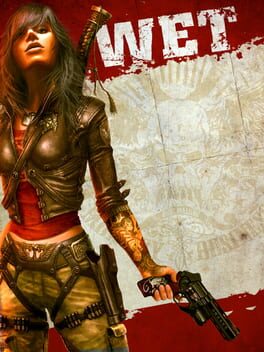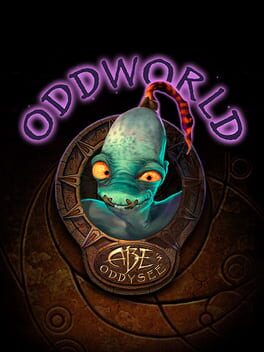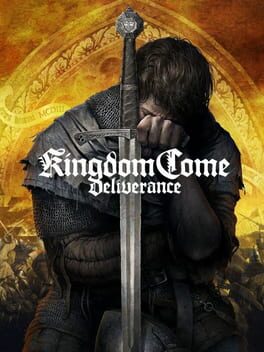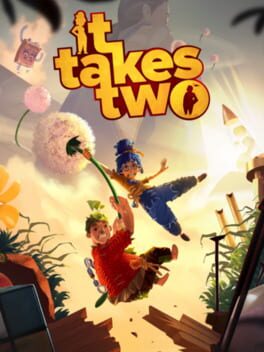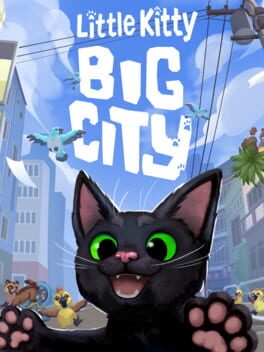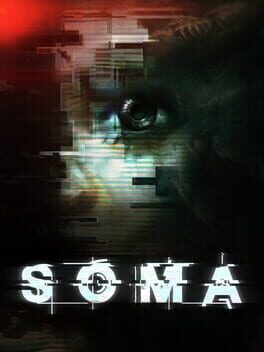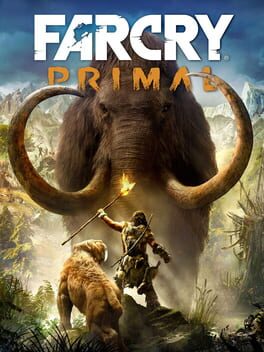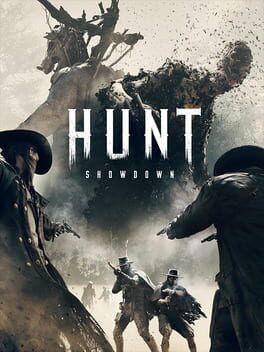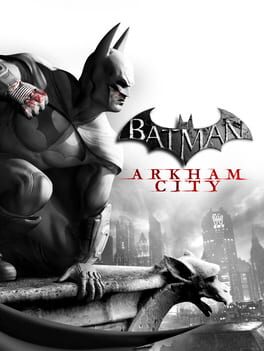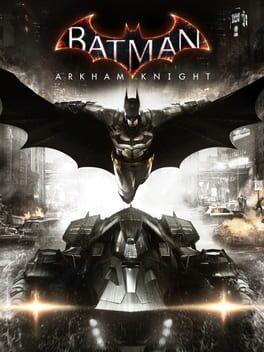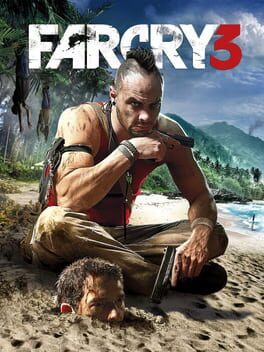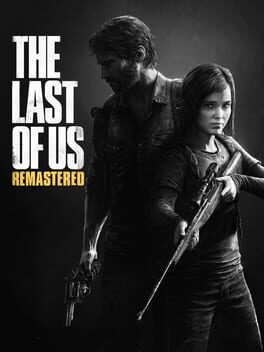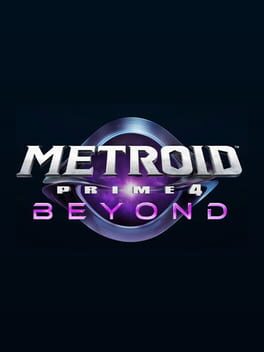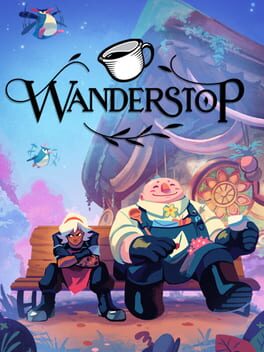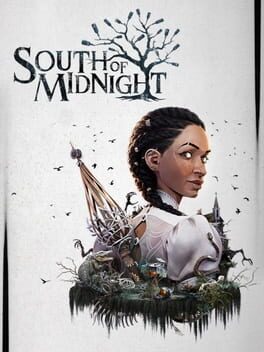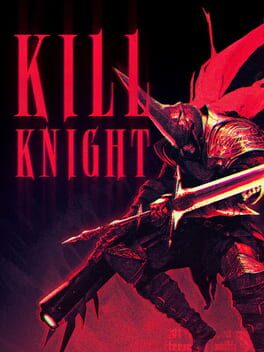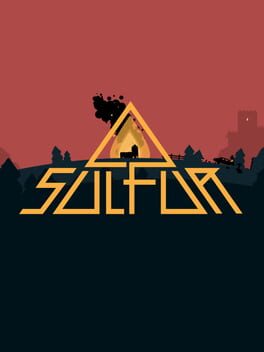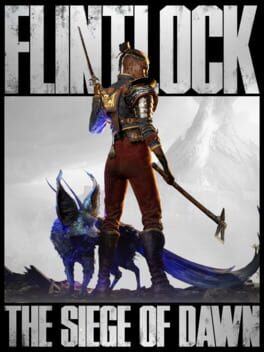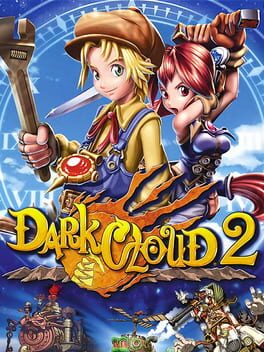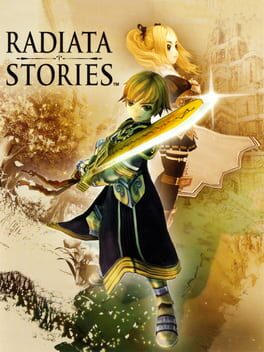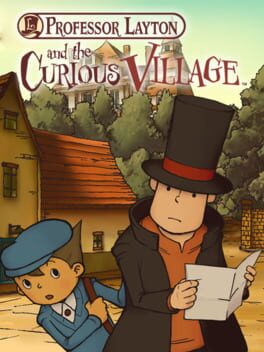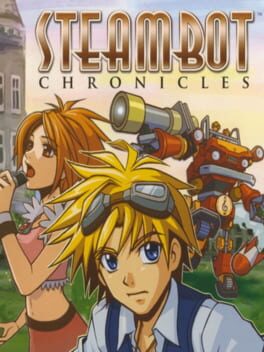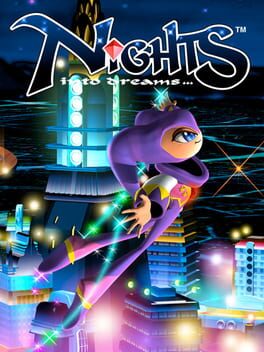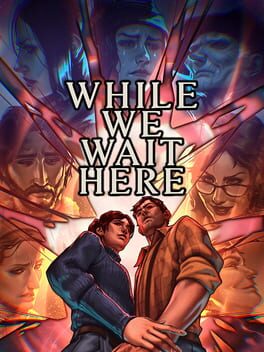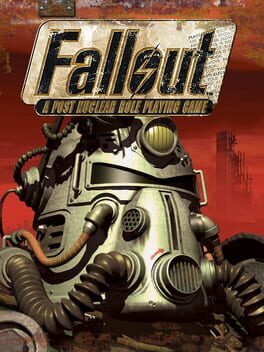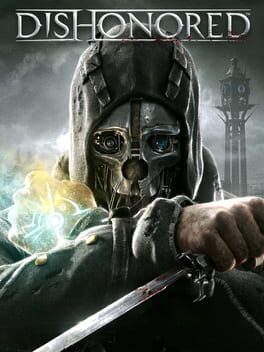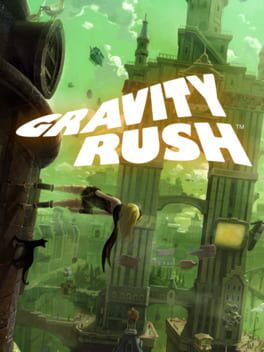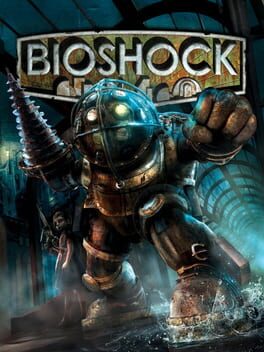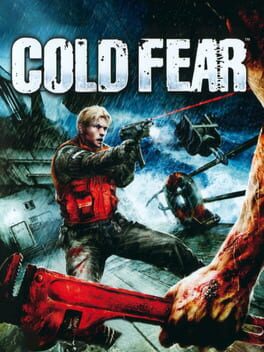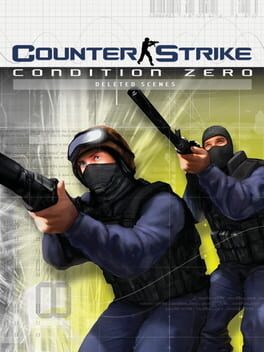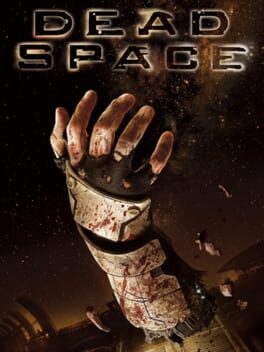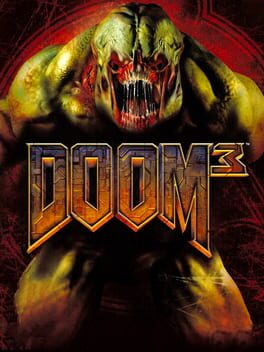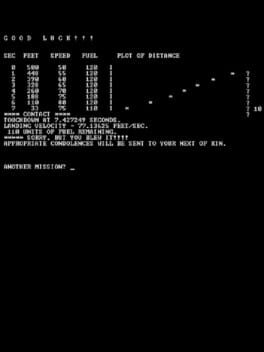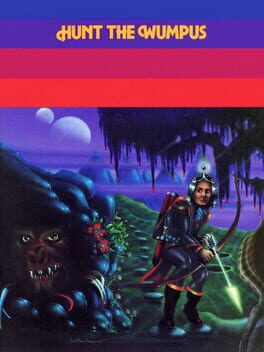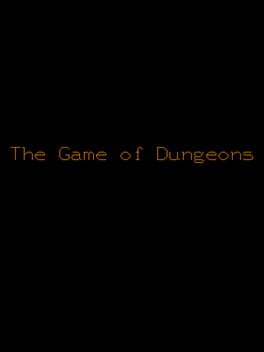Rezlo
BACKER
215 reviews liked by Rezlo
Wet
2009
WET is one of those gritty trying-to-be-bad-ass-but-doesn’t-concentrate-on-other-aspects type games. The feeling of the game is it’s the strongest point, and ironically, not the acrobatics that the game boasts about. The developers tried to nail the 70’s Quintin Tarintino/Wild West feeling and did it perfectly. Everything from buildings to clothing has a bad ass brown dirty scheme to it. There is even an old 70’s film reel filter over the screen that adds to the atmosphere. The music is also a big helper in this thanks to its classic indie feeling to it.
But the atmosphere isn’t anything if the game has bad game play and this game does not. What it does have is the unfinished game play that seems rushed. There is a lot of thought behind it, but it seemed quickly tossed together, but also is really shallow. The whole idea of the game play is based on slow motion combat. Yeah I know, we’ve seen this before in countless game (Max Payne started it all), but to be fair they add a little twist. Whenever your feet leave the ground and you start shooting you enter slow mo mode. In this mode, you have a red circle that auto locks onto an enemy then you aim your reticle at another. This was executed brilliantly so you don’t have to worry about aiming both weapons. You can go into slow mo when you slide on your shins, jump whichever way in the air, shoot from zip lines, poles, ledges; you name it.
Another addition to combat that really felt shallow was the swordplay. A simple one, two, three combos and that’s it. There could have been so much more to this, but it seems the developers were more worried about atmosphere and style than actual gameplay. You can swipe out your sword from a slide, wall run, or dive, but little does this do in turn with guns.
Over the course of the game you get three additional weapons aside from your dual revolvers: Sawed off shotgun, explosive crossbow, and sub-machine guns. Each has their strengths and weaknesses, but overall they are not used as they should thank to sparse ammo and limited capacity. You can, however, upgrade all your weapons and buy more abilities via balance points, but you will not be able to buy everything through one playthrough simply due to the fact that points are given in too small of increments.
The is also very linear and acrobatics tend to take a slight tumble thanks to this. You can hang from ledges, jump gaps, swing on poles, and what seems, everything Lara Croft can do, but the somewhat cramped environments hamper this a tad. Sometimes you will wall run and jump over to a ledge only to find out you can’t hand from there. You will sometimes try to wall run and jump to a different wall only to find out you forgot to keep the L trigger held down during this transfer.
If you think acrobatics are a tad cramped try the arena events. These are what really break up the game too much. Most shooters have “arena areas” where you have a closed off area and must defeat all enemies to advance. WET takes a little turn and has you closing off spawn points before advancing. These seem simple at first, but later on, there are so many guys that concentrating on slow-mo, acrobatics, and finding the right paths to these doors and get very frustrating and many restarts will incur.
Another addition to the game is Rage mode where Rubi will see in a red vision that kind of reminds me of Killer7 and is faster and stronger. Enemies are weaker and die faster, but there are more of them. Both arena modes and driving modes (explained below) apply in Rage mode. Rubi also gets to get her counter up faster (which I find useless) by scoring more points. The more style you use the more points you’ll get that will add to your multiplier.
There are a few other events like turret events, that are fun, and the driving events which are pretty awesome and epic. You ride on top of cars and shoot at enemies while jumping and diving around cars to avoid getting killed. This is both epic and fun thanks to its simplicity and cinematics.
One thing I have yet to mention is story and WET deliver strongly upon this. You play as Rubi Malone who is a hired mercenary/assassin that gets involved in the wrong deal between a father and a son. The voice acting is superb, but the graphics are a little technically underdeveloped. While the art style is top notch the graphics aren’t up to par with the most recent next-gen games (Gears of War 2, Uncharted 2, Assassin’s Creed 2, BioShock 2…yeah all the twos!!!). However, the awesome art style makes you see past this so it’s not so bad.
WET is a great weekend rental and has fun gunplay, and a few different events to keep things mixed up. With hot eye candy that is Rubi Malone, you will want to follow this sexy protagonist through the twists and turns that is WET.
But the atmosphere isn’t anything if the game has bad game play and this game does not. What it does have is the unfinished game play that seems rushed. There is a lot of thought behind it, but it seemed quickly tossed together, but also is really shallow. The whole idea of the game play is based on slow motion combat. Yeah I know, we’ve seen this before in countless game (Max Payne started it all), but to be fair they add a little twist. Whenever your feet leave the ground and you start shooting you enter slow mo mode. In this mode, you have a red circle that auto locks onto an enemy then you aim your reticle at another. This was executed brilliantly so you don’t have to worry about aiming both weapons. You can go into slow mo when you slide on your shins, jump whichever way in the air, shoot from zip lines, poles, ledges; you name it.
Another addition to combat that really felt shallow was the swordplay. A simple one, two, three combos and that’s it. There could have been so much more to this, but it seems the developers were more worried about atmosphere and style than actual gameplay. You can swipe out your sword from a slide, wall run, or dive, but little does this do in turn with guns.
Over the course of the game you get three additional weapons aside from your dual revolvers: Sawed off shotgun, explosive crossbow, and sub-machine guns. Each has their strengths and weaknesses, but overall they are not used as they should thank to sparse ammo and limited capacity. You can, however, upgrade all your weapons and buy more abilities via balance points, but you will not be able to buy everything through one playthrough simply due to the fact that points are given in too small of increments.
The is also very linear and acrobatics tend to take a slight tumble thanks to this. You can hang from ledges, jump gaps, swing on poles, and what seems, everything Lara Croft can do, but the somewhat cramped environments hamper this a tad. Sometimes you will wall run and jump over to a ledge only to find out you can’t hand from there. You will sometimes try to wall run and jump to a different wall only to find out you forgot to keep the L trigger held down during this transfer.
If you think acrobatics are a tad cramped try the arena events. These are what really break up the game too much. Most shooters have “arena areas” where you have a closed off area and must defeat all enemies to advance. WET takes a little turn and has you closing off spawn points before advancing. These seem simple at first, but later on, there are so many guys that concentrating on slow-mo, acrobatics, and finding the right paths to these doors and get very frustrating and many restarts will incur.
Another addition to the game is Rage mode where Rubi will see in a red vision that kind of reminds me of Killer7 and is faster and stronger. Enemies are weaker and die faster, but there are more of them. Both arena modes and driving modes (explained below) apply in Rage mode. Rubi also gets to get her counter up faster (which I find useless) by scoring more points. The more style you use the more points you’ll get that will add to your multiplier.
There are a few other events like turret events, that are fun, and the driving events which are pretty awesome and epic. You ride on top of cars and shoot at enemies while jumping and diving around cars to avoid getting killed. This is both epic and fun thanks to its simplicity and cinematics.
One thing I have yet to mention is story and WET deliver strongly upon this. You play as Rubi Malone who is a hired mercenary/assassin that gets involved in the wrong deal between a father and a son. The voice acting is superb, but the graphics are a little technically underdeveloped. While the art style is top notch the graphics aren’t up to par with the most recent next-gen games (Gears of War 2, Uncharted 2, Assassin’s Creed 2, BioShock 2…yeah all the twos!!!). However, the awesome art style makes you see past this so it’s not so bad.
WET is a great weekend rental and has fun gunplay, and a few different events to keep things mixed up. With hot eye candy that is Rubi Malone, you will want to follow this sexy protagonist through the twists and turns that is WET.
Stiff controls and an extremely delayed running jump that seems to often just not happen don't feel very good. Like seriously, every fourth or fifth attempt ends with Abe sliding of the edge and falling to his death. This might be specific to the PS version since I don't remember having this issue during my previous playthrough (PC version).
The long screen transition delay present in the PS version is another factor strongly contributing to how anything quicker - e.g. chase sequences - feels choppy and slightly out of control. I do not remember experiencing this in the PC version.
I'd still recommend the game - the world, story, cinematics, music and sound effects are all top quality. The more deliberate, slower platforming is good. But whenever things get faster, oh boy, it can suck so much.
tl;dr: it's great, play the PC version
The long screen transition delay present in the PS version is another factor strongly contributing to how anything quicker - e.g. chase sequences - feels choppy and slightly out of control. I do not remember experiencing this in the PC version.
I'd still recommend the game - the world, story, cinematics, music and sound effects are all top quality. The more deliberate, slower platforming is good. But whenever things get faster, oh boy, it can suck so much.
tl;dr: it's great, play the PC version
In 2013, Josh Sawyer, a developer from Obsidian talks about “why don’t developers make more historical RPGs” He brings up a slew of excellent points because he’s been thinking about this matter for fifteen years. I’ll paraphrase the important bits from the 23-minute video. According to Sawyer the reason why we don’t see more is owing to developers not liking history academically, believing it's boring, and a belief that players will become lost in an ancient setting. He brings up the Assassin’s Creed series which he considers highly of, saying he liked and disliked certain entries as a good example of using history as a foundation. Going further he touches on a 1992 game that does this well, called The Darklands, proving in the past, a precedent not only for RPGs in general as a major influence, but ones following it. Sawyer thinks "nobody wants to play a historical game due to no planning for it." Meaning there's plenty of work, and dedication involved when a market shows not much interest. But he rebuttals that notion, bringing previous examples not in the same realm of genres like Age of Empires Though not an RPG, he speaks highly of an untapped platform, and it must be presented in numerous ways.
Pound for pound I can’t disagree with Sawyers' reasonable evidence, rather I'm fully on board. If we break down the guidelines he sprouts then to to avoid pitfalls for such types they must:
-Have developers interested/motivated in reaching the entire chronicle to create a solid foundation.
-Don’t be boring, have to be cool, and you can embellish within reason.
-Avoid reticence feelings on history from the past, and embrace it.
-Keep it grounded, don’t go nuts with conjuring full-on conspiracies.
-Most importantly no reading material is required prior, similar to DND, you don't need to know who Drizzt is to enjoy the medium.
Hmm, I seem to recall another RPG that achieves all guidelines, in a powerful way without integrating any fantasy, magic, supernatural, sci-fi, stuff. Steeped in authenticity, accurate to the ages, and set in the medieval ages of our world. Before I say the name I have to connect the matter to a certain franchise. While awaiting the return of the Mafia franchise with the fourth still in development I couldn't help but miss the complex narrative, open-world structure with pillars of realism setting the foundation. 3 points and a franchise I'm fond of, so it's a major surprise to hear Daniel Vávra an important figure who supported the series as director/lead writer in the first and second installment leave 2K to co-found Warhorse Studios. With a Czech team, they pitched an ambitious project a decade ago, I remember those memories vividly, I saw them break their 300K initial goal on Kickstarter. To two million, With a roaring success, I avidly read their patch notes for four years, up to version 1.0 finally released in 2018 to mixed reception. Undeterred by the launch issues, I decided to wait once more, until 2024 arrived. After 130 hours completing 99% with DLC, I am thrilled to announce Kingdom Come Deliverance(KCD) created with Cryengine has successfully given me the most similar experience as playing Witcher 1(TW1), spliced with the three points I stated earlier, and accomplished another milestone to grant audiences a new historical RPG.
Good o’l medieval non-Witcher itching successfully scratched. Both are rough around the edges causing the other qualities to shine, such as the writing, a nice blend of serious conversations matched by amusing tales, and continuously injecting mature themes alongside thoughtful quest design keeping in mind the setting. Employs weird combat maneuvers, in TW1, mouse clicking and timing them on hit to cause attacks to deal damage consistently, kinda like a rhythm game a bit. KCD, on the other hand, decides to unleash a jammed pack star point formation with stabs, slashing, whacking, and determining HOW you want your weapon to attack. Offers gentle music to vibe with and keeping the visual presentation steady and no overzealous colorization in certain color spectrums! Voice actors are plentiful so you won’t notice the same kinds repeatedly. Animations I compared, since it can be a bit stiff infrequently, you’ll spot some actions then witness them again in an idle routine, yet these instances don’t take away the charm the two games present. A rich, brutal world and a story worth playing, frequently calling it a Peasant/Medieval simulator. Sakra! Even the way both main characters' names roll off the tongue. Move aside Geralt of Rivia! Henry of Skalitz has come to see us!
Yet underneath the comparisons. Lies a large open-world action immersive role-playing game set in first person with many systems and mechanics bulging at the seams connecting everything. A rundown of what to expect: Classeless jobs means you can hit classic DND archetype such as warrior, archer, thief, and more like becoming an alchemist or horse rider. A perk system is involved as you increase your skills in any profession ranging from mundane to useful. If you thought herb picking was useless, think again! I got gains in strength due to picking flowers from the grass fool! An in-depth reputation network split between speech and charisma and changeable depending on what you wear, looks are everything - look suspicious, be taken as suspicious, look like a knight be treated as a knight, Be like a nobleman be treated like so. Classic CRPGs do the usual helmet, body, and pants with limb to slot a weapon or shield in the inventory screen, here you have 20 equipment boxes. Check this image Six for the body, four for the face, six on weaponry + accessories, and four for your lower body. Oh man, I love fashion and this ticks my checkboxes, bye Skyrim! We fashioning Henry the peasant like a tanky knight! Keep in mind, to clean our clothes regularly because nobody wants a dirty guy stinking up the place! Anyways, you’ll also have to contend with a hunger/sleep mechanic which can affect your overall stamina. Alcohol can be a factor as well. A degradation mechanic is in place. So equipment needs to be maintained lest you lose their quality. Fight unruly bandits? Best use a repair kit, travel to a local blacksmith to pay a fee. Or try your luck as a blacksmith’s son and do it yourself! Additionally, foods will spoil. Some last longer than others, but it is generally not advisable to stack mountains of food on poor o’l Henry’s back. Weight is everywhere and the MC has a limit of what he can carry. Thankfully, we have a mule. No, we can’t train them to use HM moves like in Pokemon you’ll gain a horse with a separate inventory system to assist, and having a stash at home is instrumental. Finally, quests can be completed in a variety of methods, convince, kill, fail, pursue alternate solutions, etc. All the above sounds overwhelming and it can be. I would gently advise taking things slowly, and not rushing headlong lest what awaits is frustration. Everything is designed to be as realistic as possible, often to its detriment. Growing, learning, and surviving I became entrenched on the ins and outs, elevating my experience. So armor up fellas his trials are only beginning!
Bohemia’s rich chronicle in lore, world, story, gameplay and skills, combat from 1400s
Lorenut appreciates historical accuracy, and the Warhorse studio have taken lengthy strides to consult historians and architects to realize this. As a student and lover of world history, I am fascinated by the ancient period, but a cool RPG to educate newbloods on their country's rich annals, the Czech Republic now, used to be called Bohemia. A place where my boy Henry lives in turbulent times, a critical war broke out in 1403, factions divided and the poor sod is stuck in the middle of it! His story is a vital part of many stories told, connected into the over-encompassing narrative surrounding two major figures, King Wenceslas the Fourth and Sigismund of Luxembourg feel alive than reading them as a reference point, don’t worry you’ll get to learn these important dudes as you boot up the game with a fabulous intro. Sure certain liberties are taken to embellish things, but if I wanted accurate readings I’d head to the library and learn from books with 1st hand accounts with the possibility of my eyes slowly drooping from becoming bored. I’m playing a game, and I’m here to enjoy. As such when you combine my favorite passions(History + Gaming) you receive a wonderful combo, the Codex. A handy ‘little’ lore book is the bread and butter to understanding everything that occurs, by my estimates an excess of 200 to 300 valuable pages of text to peruse about enclosed in-game. Tabs of tutorials, characters, society, events, locations, and general, a mix of game and genuine as I can see accounts, detailed in non-complex terms to understand. Probably an elementary student to high schooler can comprehend the text within, yet it's handled with loving care to differentiate and point out what is real and what the game fictionalized. Praise Jesus Christ. Already my worldbuilding recommendation is passing out on the floor while raising two thumbs up! HELL YEAH! This is what games should strive for. Exerting maximum effort on lorebuilding and most importantly differentiating what’s real and not, and keeping it simple to complex for those various readers! Heck, as you venture off into anywhere the codex will pop up on the top right-hand corner to tease viewers to study upon. Knowledge is power. And boy oh boy does learning as much as you can in the Codex aid to pay off in sizable dividends as you progress, yet I must confess.
I didn’t read everything! Uncommonly I just wanna play the game and not have to worry, touching the systems, mechanics, hidden stuff, and lore texts! And that’s very understandable and valid. Playing without these essential texts is viable, hitting a single criteria of the guidelines I stated earlier in Sawyer’s video. And that’s how I like to roll generally, I don’t want to review pages of texts to understand the game coughs in Pathfinder homework Yet I was slowly lured like a student hungry for new forbidden information to learn. I dived headfirst like a knight Rambo and suffered for it, accepting the consequences of my actions as a learning experience. I was caught stealing and served my punishment in jail. Thankfully these guards aren’t like Elder Scrolls IV guards, zeroing in on my location as if I have a permanent tracker. They’re dumb, but also smart, reminds me of Thief’s series guard AI. I didn’t care toward hunger and sleep and was brutally killed during combat against foes with lower fighting power. I was flabbergasted. Turns out I need to eat and sleep properly to maximize my overall stamina. No stamina? Well, good luck son, on executing a strenuous move. Jumping, running, shooting a bow and arrow, and slashing with a weapon takes a greater toll on being handicapped. I didn’t care on reputation a earthshaking amount and was looked upon with suspicion for wearing black clothes whilst filthy. Trust me it's not cool stopping in front of guards and interrogated uncommonly…
After such a harrowing learning experience I decided to buckle down, studiously check the tutorial sections in my codex, and fix my earlier mistakes. Once I did, the whole game started to become clearer in my eyes. I noticed NPC’s have routines, nice to watch them roaming around the surrounding area, accomplishing their chores, or working hard at their respective jobs. Cleaning latrines, carrying water from the well, and setting commodities in stalls. The open world feels alive and real, the landscape is gorgeous, blooming with countless healthy grass and lively trees on the horizon and filled to the brim with deep forests loaded of animals and secrets, struggling people with wooden houses feel as though a single earthquake could topple them, roads due to the periods don’t always have concrete. Thus the muddy road is life and you better embrace becoming dirty as plenty of filthy peasants are around. Lighting and darkness are given care to allow a sneaky guy to commit skullduggery with no remorse! Just gotta make sure no sound is heard when picking locks via a mini-game and knocking out fools from behind never gets old! If I had my blackjack. Garret from Thief would be proud of Henry, I'd utter! Though, fair warning. It’s not guards you have to contend with, the commoners will react to sketchy activities like entering their house. What are you a burglar! Out with ye! Needless to remark, it's a critical idea to check your surroundings when in stealth-mode. Noise can alert nearby people! Vital because once you stray back into the light 1400s society is just as dark as its citizens. Despite the sunny atmosphere when morning arrives, everyone to a degree has an agenda. Seldom you will find naive, innocent pure souls, usually coming across as noble people taking advantage of the peasants by either power, money, or using their knowledge against those illiterate and dumb. Likewise, peasants also have their ways to even the score by undergoing seedy underbelly professions like thievery, killing, banditry, and etc. Tough life out there and the grayish duality of man is in bursting force to throw my main peasant for a loop de-doo as either unwilling lackey or manservant. However, for the trials he undergoes I can’t help but appreciate a remarkable earnestness, he’s naive, innocent, and untested in a harsh world.
And honestly vulnerable as a humpty dumpty. Yet the frail body in the inception, Henry's story is a treat to witness and partake, and growing stronger, these moments and conditions emerges a personal identity depending on his actions and consequences as you progress on yer adventure. The complex narrative is a bit simple in the commencement, climbing as he experiences a lot for a young guy and I relate to the lad on occasions as I grow and learn struggling in trying ordeals. I wouldn’t announce this hits the highest emotions, rather it excels quite well in setting the stages of struggle thrown our son of a blacksmith's way. His methods dealing with the incoming events/figures with an eagerness to please and contend with his darker tendencies, the methods he conjures establish him as a newbie still learning the ropes of the old Czech lands. His naivety and innocence becomes tested in hard days is a noteworthy endeavor to witness as I mingled with both common and noble folk. And Daniel Vávra(+team) maximizes their tenure from the Mafia series to rekindle tight, realistic segments to keep my interest steady on him and important figures intertwined. Reminded me a bit of what Shulk's ordeals from Xenoblade Chronicles, yet it’s not always about these protagonists 24/7, always layers hidden underneath.
A sliver of a peek into my guy from the beginning to end, without spoilers. He endured: an incredibly tough traumatic event, forcing him to seek both unhonorable and honorable paths to exact wrongs, a fumbling idiot who with patience and effort molds his tongue to charm, bewit, and convince many un/fortunate souls, brushing elbows with commoners and nobles delicately walking the path of a jokester to a diplomat. Undergoes a rigorous profession in disguise, following the herd to unearth a mystery, much like an assassin blending with harmless folk. The addictive feeling of staying on the path of light and facilitate without reward is a gratifying feeling, as is delving into the seedy dagger-wielding road when the above cannot be achieved. Hell, man can be a drunkard with solid fist-fighting skills and if that doesn’t work a bow and arrow job as a hunter works. Live life away from the turbulence. Or if you fancy a life of alchemist and sweet-talking maidens sure that way is also viable. Apt humor is present to balance the seriousness, won’t delve into further detail, but I did get probably over two dozen moments of me chuckling.
Periodically I felt KCD is like an Elder Scrolls game except not, they have enough to stand on their own feet. For example, suppose notions you can exploit. Got it? Now then lemme tell ya to throw it away. The title surrounds itself with checks and balances to prevent obvious exploits in favor of creating a realistic world, for better or worse, thus an Immersive RPG arrives with emergent gameplay succeeding in granting me a fun-filled playthrough. Extremely satisfied on plenty of freedom to approach situations at your leisure. Fail quests at your discretion, perceive outside the box maneuvers to crazy acts or kill every soul in your objective, take a stealth-based manner to complete your objectives, or suave your silver tongue around and manage to twist foolish fools daring to engage in conversation with you! Miraculously, convincing them to do what you want! That’s al- Nah man, There’s more! You can poison enemies, knock them out, and bait them towards an area. Honor Duel!? Meh, I’ll swipe out the armor before the fated day! Sabotage works! Do you want me to detail each job? Sorry, that's spoilers. But I'll give you a cool number. 17+ professions are possible, some of which are only available in multiple missions. Varying in quality. In three tiers. Main quests(MQ), sidequests(SQ), and activities. The best kinds can be found in the MQ and SQs. Activities are mostly fetch activities. But not boring to the gills, since you have numerous options to undertaking them like I said above, often I found working my skills repeatedly, bolster a bunch to combating the harsh kickoff. Aside from the principal stats: strength, agility, vitality, speech. He has a big wheelbarrow of skills to invest in. From battle, he can improve defense, warfare, axe, bow, mace, sword, and unarmed. From general skills, he can nurture alchemy, drinking, herbalism, horsemanship, houndmaster, hunting, lockpicking, maintenance, and pickpocketing I can speak excess, but you probably get the picture. Simply repeating the same activity will increase your abilities in their respective category. Theoretically, you didn’t hear this from me. You literally have the power to grind early on and become buff Aragorn instead of a physical weak Frodo. Thus I was immensely satisfied with the prominent systems and mechanics of progression. The rate of leveling up, and earning perks made me believe the devs loved the Fallout series because earning a new perk to choose never fails to bring a smile to my face. Imagine our main character as a jack of all trades, where every action is valuable. I recommend them for the rewards early on since he is weak as hell. Dude sucks. And that’s the truth. He’s not a veteran Witcher from the star, not a fella you can set from a preset of races from Dragon Age, Nor is he capable of using countless cool abilities from the Divinity, He’s a youngin and forced to mature in a comparable way as the MC from Baldur’s Gate In a humongous rough land of Bohemia with no fantasy, supernatural, magic era. Similar in distinct respects to the cruel state of the Stolen Lands in Pathfinder.
Combat is realistic, weighty, and intense
Outside of Sekiro, and Ghost of Tsushima, among others I could discuss I would firmly plant Kingdom Come Deliverance into the category of intense duels to engage in. All three games excel by utilizing their personalized fighting mechanics to the maximum effect.
Sekiro’s - Posture and stagger are invaluable to starting, maintaining, and adjusting battles in various degrees by arsenal or skill. Allowing a stuffed range from very balanced to roughly difficult boss fights. Thus an excellent tug-of-war emerges, where you can’t beat them ASAP, takes effort.
Ghost of Tsushima - Duels, especially in Lethal mode, transforms the whole game into an always dangerous world, a single hit is the difference between life and death. Applies to both mobs and bosses. Clashes transform into silent faceoffs as you wait for the enemy to move before you summon an Iaido strike to win. Fail and you will have to try again. Blocking, parrying, dodging when needed. Bouts are not as long as Sekiro’s but in terms of quickness and telegraphed attacks they become easier to learn. Therefore the skill ceiling isn’t as high as Fromsoft’s aforementioned title above. Takes work though. You can beat them in an instant or prolong battles if you wish. Depends on skill.
Kingdom Come battles are always fair and challenging even until late game, You’re never over-powering with stats because a skilled swordsman can wipe the floor with you. I’m very impressed honestly to share, this is one of the most balanced IP's I’ve played for duels. Armor reinforces a great deal, but when my foe is whipping out a shield and chain-combos, then I can only spam attacks, well you can see the difference in skill already. 80 hours in I still wasn’t strong enough to beat 1v1’s of master knight quality. I was a scrub the whole way and enjoyed emulating that profession greatly. He retains being a clumsy swordsman even as he gets better. However, not a mark against him. He is a peasant, As you grow with him, he can grow a deadly fighter, with enough skill and effort, starting from garbage into something respectable, sure the journey wasn’t instant and I had to train to reach an acceptable level. But the sweat and pain once I had beaten masterful knight dudes who would’ve given me a 1 hit slash and now lay dead on my feet is a cathartic feeling, granting me a deeper appreciation for action systems in general.
Back then critics could remark its cumbersome, unruly, complex, and hard to understand, like Captain Klang, a contributor for a passage in the CRPG book(I conceive of this like a Big ol CRPG bible) tells readers on KCD's entry on pgs 564-565. "Combo's are worthless-" My brother in christ. I respectfully disagree. I didn’t realize the magnificence of combos until late game. And this was double-digit hours after I had a tutorial. Combos are the opposite of worthless and turning fights from brutal engagements into a dance. I button press and swing my analog sticks in certain directions like southwest slash to west then east and bam! A new animation occurs. He will slap the sharp edge of his blade to the combatant's cheek! Holy S%^&. MC basically did a bit%&slap! In dark ages! What’s more, you can execute combos as you upgrade your sword skills. Becoming increasingly proficient and allowing the player to utilize extra combos. Hell, even maces have them too! Single-handedly made it fun and super enjoyable than before. I admit I’m not the sharpest tool in learning stuff until late game. But the sheer feeling of joy as I discovered the proper use was unparalleled. Combos are awesome. Period.
I perceive it as an imperfect system trying its best to emulate medieval combat, it is why I liken it to Witcher 1 in the same vein. Sure baby pants Cd Projekt Red didn’t make it as in-depth as I would’ve liked and it leans heavily towards simplicity in concept, yet the ambition to construct it different from distinct weaponry fights proves its weight in gold. Stands out alongside CRPGs and Duel-worthy titles. Give me a game with changing up a battle system to be fresh concerning sword fighting? Probably out there, but I haven’t had the pleasure of playing them just yet.
Hmm, where did I leave my DLC thoughts
Before I dive into my mixed feelings let me share extra thoughts on various DLC. Hopefully, this will help prospective buyers interested in them or not.
Treasures of the Past: Weakest content offering from the whole DLC bunch. You get maps, to figure out the treasure's location. Didn’t find much use in my memories, only stumbled on a couple to dig deep, if you can get it on sale at a dollar or less then it's fine to install. Useful for certain items/equipment to sell and use or for a nice handful of rigged dice when participating in the minigame.
From the Ashes: Surprised to spot a town-building component. A wicked concept, that needed spare time in the oven to work out its roughness. You can activate during your session or postgame. But be warned it is a MAJOR money timesink. I was not able to finish it in its entirety. My citizens rebelled since I didn’t have enough to pay for upkeep. Oof, trust me, I found my whole playtime challenging to make bank either by selling, stealing, or making a profit by selling wild game. From what I read online you need nearly 100K or at the very least 20K+ investment and choose the right options to let your town earn profit for you to collect. I was not able to earn a profit and kept having to find a way to produce bundles of cash quickly. Though, this presents an uphill battle because traders don’t have an abundance of wealth to spare and not a chunk of dough opportunities to strike rich. Still for what it's worth. I enjoyed and the bucks I had to offer to choosing which buildings to erect, what people to employ, and settling conflicts as Bailiff were a nice change of pace from the turbulent adventures of Henry of Skalitz. If you can buy it for less than 2 bucks, I believe it's worth it, At MSRP. Hell no.
The Amorous Adventures of Bold Sir Hans Capon: One of the enjoyable sidequests within. You can activate the same as the above or right before the primary game ends, assisting Sir Hans Capon as his wingman in his ‘love’ pursuit. Satisfying amount of well-placed humor and shenanigans I found amusing and hilarious what our duo undergo, doesn’t take too long to complete and offers a refreshing laughter-filled venture from the seriousness of the campaign, bonus points for allowing him to accompany silly adventures with his friend. If you can buy it for less than 2 dollars, I believe it's a steal. At maximum price, questionable.
Band of Bastards: By far a favorite of the DLCs. You join a mercenary band in a handful of side missions in the region. Familiarizing yourself with the band, interacting with them in silly stuff like dice mini-games, and asking pivotal questions concerning honor, mercenary life, and beliefs. Also provides our main character with companions rather than lone wolfing for a substantial period in the campaign outside of a few exceptions. So if you’re up for different sorts of requests than usual with buddies! Then look no further than with the Bastards. An absolute steal if you can buy at less than 2 buckaroos. The highest price is again questionable.
A Woman’s Lot: Almost a must-have DLC, technically 2 parts. First part allows the protagonist to ask his friend regarding the events that happen in his hometown, where you assume the role of the MC's friend at the start. Freaking blew my mind, with her own stats and capabilities. Satisfying length of hours contained as her story is conveyed what she had endured from her perspective. I'll withhold the spicy details to state, but I was very shocked to glimpse what happened to her. Thus making the events, in the introduction, further impactful and contextualized of what she had endured and achieved. With KCD II coming, I wish she will return. Cause, I’m tired of playing as guys in the medium, always nice to hear from a new gender perspective.
The 2nd part consists of assisting an old female friend of our protagonist except we don’t re-enact the same role as the previous part. Instead, she experiences mysterious visions. What for? Not sure! It’s up to you, the son of a blacksmith! Has a handful plus of assignments to her name filled with an interesting religious topic that is barely touched upon in the narrative. Tis a bit slow at first, but the finale is a tantalizing endeavor. I figure every player should try out by looking at a walkthrough. Demonstrating the best parts of the speech/reputation system and taking into account past actions conducted, was surprised to observe how the DLC fit in line with the post-game despite the fact you can activate it over the primary story. If you can buy it for less than $3. I fully believe it's a steal of a deal. At max price, I'm hesitant. But offers an appealing different perspective I found satisfying to finish.
A Witch Hunt of Mixed Feelings
Sadly, I did happen across a fair amount of mixed feelings. Not a positive or a negative simply concerns I had that vary in degree amidst my long 130+ hour playthrough doing everything I can. Regard these as notable notes!
First, performance is demanding, both Console and PC depending on specs. I tried it on my poor to midtier PC and I was hitting 30fps solid, which looks fine. But it seems optimal for higher frames. As a result, I played a copy on my PS4 Pro and that was far better for me. Whichever case you pick, I would advise testing the game out on Steam via the 2-hour window then refund if unsure your PC will run it well. Do keep in mind comparison videos on the game over five years ago could be outdated on the grounds of new patches. So what you scrutinize from before vs. now may seem a tad different. Not a deal breaker I imagine, just a gentle reminder to double-check videos creation date. I didn’t link each videos, since I’m hesitant to give a circumspect comparison between each version without definitive proof.
Second, sometimes when you pass a speech check it doesn’t work in spite of climbing over the requirements, at least Stat-wise. For example, Let's proclaim he has 10 speech. And the individual he’s conversing with has 8. Uncommonly you may in a failed result upon trying to persuade them. I did a lil deep sleuthing and discovered the system isn’t as hard by the numbers to win. Rather dependent on several qualities. The social status, dangerous looks, and the silver tongue. Using the above example, since we failed an alternative, then we must use the diverse options. Intimidation by the attire you wear to look like someone not to be trifled with. The reputation of the individual such as being a noble(as well as clean and not filthy) is a key factor. And the sweet talker’s persuasion is a third fair choice. A fourth option does exist by the usage of bribery too! So if an option fails despite having a number advantage. Then most likely the varied choices will fare better.I should’ve read the tutorial better… D’oh! Here’s pictures of the way, it’ll turn in case of confusion.
Third, timed & missable quests - if we realized how realistic the world is and the manner NPCs operate with their routines. Then rare operations are limited by certain days and therefore missable. But, fear not! Usually, the NPC giving the objectives will detail urgency along with a set limit so it’s not doom and gloom 24/7! Jobs give you ample space to complete them and I wasn’t overly stressed on the limits. Rather I view it's important to highlight this aspect so players who leisurely take their activities completing optional stuff will know the immediate magnitude to finish as soon as they can and not dilly dally. Otherwise check a solid amount from howellq compiled. Only peek inside parentheses from the official names.
Fourth animations can take a while and vary in length. The devs made it very painstakingly obvious our main character's actions takes time. Physical activities from reading a book, sleeping, fighting, picking flowers, and unsheathing will play a short amount to operate. Not the biggest issue I faced, but I feel that generally it's may be slow to deal with, having to watch a small animation execute. Reminded me of picking up plants in Farcry 3 wish there was a skip animations setting turned on, I like quick action ya know!? Thus players do seem to say that a VR-like perspective emerges and coupled with the jank here and there can accumulate into an annoyance, the impact of this problem is extremely minimal.
Fifth mechanics of save, hunger, and sleep are nothing to get stressed over. The systems are fairly generous to survive in Bohemia of the knightly & noble/commoner dates. A clever way the developers solved the hunger mechanic is having every house I've visited and gathering between people in camps have a pot of food. You have free reign to eat around then act on yer business. Sleep is a non-issue as well. My boy has sleeping quarters he can sleep in, kill unscrupulous bandits and use their camp, or pay a super tiny fee to procure a room in the tavern. A well-rested lad excels with enough energy than a person constantly closing their eyelids and sometimes falling asleep in the midst of the day due to tiredness. Saving is perhaps the biggest ordeal I’ve heard. Out of my finished CRPG’s, this takes the cake for realism at its finest. You can’t save or quicksave like other RPGs. Rather you need various requirements to fulfill. One is to drink a savior schnapp which is a saves potion. Can also be made using alchemy. A substitute is sleeping in a bed you own or rent can allow for saving. A final way I love to abuse is the save and quit in the pause menu. Perhaps the implementation of the save mechanic may seem unnecessary and I would’ve agreed with you in the beginning, however after ruminating a long while I believe I’m on board with the execution.
Usually in RPGs, I make it a habit to quicksave regularly. As someone who’s enjoyeda plethora of Bethesda games, such a practice becomes commonplace. In the Warhorse studio game, the method is thrown away in favor of adding realism to the world. Accepting the consequences of our actions. Heck we can’t change armor/weapons or heal ASAP during skirmishes! You either win, run, or die. There’s no quick loading to save the skin of your teeth!But for me, I just use the save and quit method to circumvent this heh.
Sixth, slow-burn introduction - Primarily caused by the rough and harsh world as you struggle with barely anything along with MC's deplorable stats. Investing a decent amount along with covering a reasonable space to truly appreciate what the devs are trying to do aside from immersing the player into the rough climate of politics and upheaval of the status quo in Bohemia. The mechanics and systems present offer an interesting interaction between the mechanics and the systems in place. Sure, they don’t need to know every little bit. Much like an individual having fun in Dragon’s Dogma regardless of having hidden stuff underneath. Immensely gratifying to witness his growth from a weak boy into [blank,] entirely different from the past. Rome wasn’t built in a day man! Takes effort, and a lot of sweat and tears to buildhim into a force to be reckoned with. And I love in defiance of my character at maxed level, the difficulty and balance continue to not waver in the weaponry struggles. Clashing against a veteran will prove challenging and I was pumped! To endure the duels in the endgame. Or cheat by launching an arrow to the face if unarmored hehe.
A Final Letter
Despite my mixed feelings, they didn’t greatly impact my playthrough, akin to a rusty but reliable blade, once maintained properly can metamorphose into a truly shining blade to behold. Taking everything into account served to enhance the charm of what is presented, a medieval, realistic open-world RPG game immersive to the gills while still being very enjoyable in its entirety. Looking back among other historical games I’m glad this type of game exists, we’ve had our Sid Meier's Civilizations, Age of Empires, Assassin’s Creeds, Total Wars, Mount and Blades, Pillars of the Earth, Pentiment, indies, and notables I can’t think of off the top of my head right now. Yes they to varying extents do NOT follow history to the most authentically 100% accuracy. As a game, we need to recognize that it's okay for developers to not always be factually correct lest we bore our audience and show what is real or not, significant how our aforementioned title conducts itself by employing the codex, balancing annals and thus we are treated to a great chronicle foundation with passion. If I wanted to dive deeper into Czechian history I'll head to the library and search for them. In the end, seeing a sequel coming to the franchise is a breath of fresh air and a welcome surprise, especially in the genre. As their predecessor once achieved in the past with a cool story to learn about a humble team from Mafia transitioning into a whole new category and applying their experience by utilizing Kickstarter to prove to investors and further, there was a demand for a Western RPG purely set in the 1400's. Removing fantasy, supernatural, and sci-fi in favor of harnessing historical accounts to craft a worthy game to the masses according to their portrayal, bringing forth familiar feelings and wonder, like my time with the first Witcher game. Where Polish devs would one day lay the foundation of a series in a market tapped for mature fantasy storytelling, so too do I behold a similar example with Czech devs on Kingdom Come Deliverance. Easily a must-play for those interested in a peasant-medieval CRPG narrative, and hey Henry’s adventures are not done yet! Turns out Warhorse Studios is cooking up a sequel coming soon this year! Never too late to try KCD or make one in the niche market like Americana Dawn! Heck, a Sawyer guy did! If he can do it, so can you!
8.4/10
References & Additional Material:
Josh Sawyer’s - “why don’t developers make more historical RPGs’
Daniel Vávra Mobygames Full Credits
Kingdom Come Deliverance Kickstarter
CRPG Book - Tis free. No catch. Author made it free for everyone!
Helpful Links:
KCD mixed reception - KCD inventory example - KCD Speech and persuasion - KCD timed quests - KCD Before I play - Emergent gameplay
Pound for pound I can’t disagree with Sawyers' reasonable evidence, rather I'm fully on board. If we break down the guidelines he sprouts then to to avoid pitfalls for such types they must:
-Have developers interested/motivated in reaching the entire chronicle to create a solid foundation.
-Don’t be boring, have to be cool, and you can embellish within reason.
-Avoid reticence feelings on history from the past, and embrace it.
-Keep it grounded, don’t go nuts with conjuring full-on conspiracies.
-Most importantly no reading material is required prior, similar to DND, you don't need to know who Drizzt is to enjoy the medium.
Hmm, I seem to recall another RPG that achieves all guidelines, in a powerful way without integrating any fantasy, magic, supernatural, sci-fi, stuff. Steeped in authenticity, accurate to the ages, and set in the medieval ages of our world. Before I say the name I have to connect the matter to a certain franchise. While awaiting the return of the Mafia franchise with the fourth still in development I couldn't help but miss the complex narrative, open-world structure with pillars of realism setting the foundation. 3 points and a franchise I'm fond of, so it's a major surprise to hear Daniel Vávra an important figure who supported the series as director/lead writer in the first and second installment leave 2K to co-found Warhorse Studios. With a Czech team, they pitched an ambitious project a decade ago, I remember those memories vividly, I saw them break their 300K initial goal on Kickstarter. To two million, With a roaring success, I avidly read their patch notes for four years, up to version 1.0 finally released in 2018 to mixed reception. Undeterred by the launch issues, I decided to wait once more, until 2024 arrived. After 130 hours completing 99% with DLC, I am thrilled to announce Kingdom Come Deliverance(KCD) created with Cryengine has successfully given me the most similar experience as playing Witcher 1(TW1), spliced with the three points I stated earlier, and accomplished another milestone to grant audiences a new historical RPG.
Good o’l medieval non-Witcher itching successfully scratched. Both are rough around the edges causing the other qualities to shine, such as the writing, a nice blend of serious conversations matched by amusing tales, and continuously injecting mature themes alongside thoughtful quest design keeping in mind the setting. Employs weird combat maneuvers, in TW1, mouse clicking and timing them on hit to cause attacks to deal damage consistently, kinda like a rhythm game a bit. KCD, on the other hand, decides to unleash a jammed pack star point formation with stabs, slashing, whacking, and determining HOW you want your weapon to attack. Offers gentle music to vibe with and keeping the visual presentation steady and no overzealous colorization in certain color spectrums! Voice actors are plentiful so you won’t notice the same kinds repeatedly. Animations I compared, since it can be a bit stiff infrequently, you’ll spot some actions then witness them again in an idle routine, yet these instances don’t take away the charm the two games present. A rich, brutal world and a story worth playing, frequently calling it a Peasant/Medieval simulator. Sakra! Even the way both main characters' names roll off the tongue. Move aside Geralt of Rivia! Henry of Skalitz has come to see us!
Yet underneath the comparisons. Lies a large open-world action immersive role-playing game set in first person with many systems and mechanics bulging at the seams connecting everything. A rundown of what to expect: Classeless jobs means you can hit classic DND archetype such as warrior, archer, thief, and more like becoming an alchemist or horse rider. A perk system is involved as you increase your skills in any profession ranging from mundane to useful. If you thought herb picking was useless, think again! I got gains in strength due to picking flowers from the grass fool! An in-depth reputation network split between speech and charisma and changeable depending on what you wear, looks are everything - look suspicious, be taken as suspicious, look like a knight be treated as a knight, Be like a nobleman be treated like so. Classic CRPGs do the usual helmet, body, and pants with limb to slot a weapon or shield in the inventory screen, here you have 20 equipment boxes. Check this image Six for the body, four for the face, six on weaponry + accessories, and four for your lower body. Oh man, I love fashion and this ticks my checkboxes, bye Skyrim! We fashioning Henry the peasant like a tanky knight! Keep in mind, to clean our clothes regularly because nobody wants a dirty guy stinking up the place! Anyways, you’ll also have to contend with a hunger/sleep mechanic which can affect your overall stamina. Alcohol can be a factor as well. A degradation mechanic is in place. So equipment needs to be maintained lest you lose their quality. Fight unruly bandits? Best use a repair kit, travel to a local blacksmith to pay a fee. Or try your luck as a blacksmith’s son and do it yourself! Additionally, foods will spoil. Some last longer than others, but it is generally not advisable to stack mountains of food on poor o’l Henry’s back. Weight is everywhere and the MC has a limit of what he can carry. Thankfully, we have a mule. No, we can’t train them to use HM moves like in Pokemon you’ll gain a horse with a separate inventory system to assist, and having a stash at home is instrumental. Finally, quests can be completed in a variety of methods, convince, kill, fail, pursue alternate solutions, etc. All the above sounds overwhelming and it can be. I would gently advise taking things slowly, and not rushing headlong lest what awaits is frustration. Everything is designed to be as realistic as possible, often to its detriment. Growing, learning, and surviving I became entrenched on the ins and outs, elevating my experience. So armor up fellas his trials are only beginning!
Bohemia’s rich chronicle in lore, world, story, gameplay and skills, combat from 1400s
Lorenut appreciates historical accuracy, and the Warhorse studio have taken lengthy strides to consult historians and architects to realize this. As a student and lover of world history, I am fascinated by the ancient period, but a cool RPG to educate newbloods on their country's rich annals, the Czech Republic now, used to be called Bohemia. A place where my boy Henry lives in turbulent times, a critical war broke out in 1403, factions divided and the poor sod is stuck in the middle of it! His story is a vital part of many stories told, connected into the over-encompassing narrative surrounding two major figures, King Wenceslas the Fourth and Sigismund of Luxembourg feel alive than reading them as a reference point, don’t worry you’ll get to learn these important dudes as you boot up the game with a fabulous intro. Sure certain liberties are taken to embellish things, but if I wanted accurate readings I’d head to the library and learn from books with 1st hand accounts with the possibility of my eyes slowly drooping from becoming bored. I’m playing a game, and I’m here to enjoy. As such when you combine my favorite passions(History + Gaming) you receive a wonderful combo, the Codex. A handy ‘little’ lore book is the bread and butter to understanding everything that occurs, by my estimates an excess of 200 to 300 valuable pages of text to peruse about enclosed in-game. Tabs of tutorials, characters, society, events, locations, and general, a mix of game and genuine as I can see accounts, detailed in non-complex terms to understand. Probably an elementary student to high schooler can comprehend the text within, yet it's handled with loving care to differentiate and point out what is real and what the game fictionalized. Praise Jesus Christ. Already my worldbuilding recommendation is passing out on the floor while raising two thumbs up! HELL YEAH! This is what games should strive for. Exerting maximum effort on lorebuilding and most importantly differentiating what’s real and not, and keeping it simple to complex for those various readers! Heck, as you venture off into anywhere the codex will pop up on the top right-hand corner to tease viewers to study upon. Knowledge is power. And boy oh boy does learning as much as you can in the Codex aid to pay off in sizable dividends as you progress, yet I must confess.
I didn’t read everything! Uncommonly I just wanna play the game and not have to worry, touching the systems, mechanics, hidden stuff, and lore texts! And that’s very understandable and valid. Playing without these essential texts is viable, hitting a single criteria of the guidelines I stated earlier in Sawyer’s video. And that’s how I like to roll generally, I don’t want to review pages of texts to understand the game coughs in Pathfinder homework Yet I was slowly lured like a student hungry for new forbidden information to learn. I dived headfirst like a knight Rambo and suffered for it, accepting the consequences of my actions as a learning experience. I was caught stealing and served my punishment in jail. Thankfully these guards aren’t like Elder Scrolls IV guards, zeroing in on my location as if I have a permanent tracker. They’re dumb, but also smart, reminds me of Thief’s series guard AI. I didn’t care toward hunger and sleep and was brutally killed during combat against foes with lower fighting power. I was flabbergasted. Turns out I need to eat and sleep properly to maximize my overall stamina. No stamina? Well, good luck son, on executing a strenuous move. Jumping, running, shooting a bow and arrow, and slashing with a weapon takes a greater toll on being handicapped. I didn’t care on reputation a earthshaking amount and was looked upon with suspicion for wearing black clothes whilst filthy. Trust me it's not cool stopping in front of guards and interrogated uncommonly…
After such a harrowing learning experience I decided to buckle down, studiously check the tutorial sections in my codex, and fix my earlier mistakes. Once I did, the whole game started to become clearer in my eyes. I noticed NPC’s have routines, nice to watch them roaming around the surrounding area, accomplishing their chores, or working hard at their respective jobs. Cleaning latrines, carrying water from the well, and setting commodities in stalls. The open world feels alive and real, the landscape is gorgeous, blooming with countless healthy grass and lively trees on the horizon and filled to the brim with deep forests loaded of animals and secrets, struggling people with wooden houses feel as though a single earthquake could topple them, roads due to the periods don’t always have concrete. Thus the muddy road is life and you better embrace becoming dirty as plenty of filthy peasants are around. Lighting and darkness are given care to allow a sneaky guy to commit skullduggery with no remorse! Just gotta make sure no sound is heard when picking locks via a mini-game and knocking out fools from behind never gets old! If I had my blackjack. Garret from Thief would be proud of Henry, I'd utter! Though, fair warning. It’s not guards you have to contend with, the commoners will react to sketchy activities like entering their house. What are you a burglar! Out with ye! Needless to remark, it's a critical idea to check your surroundings when in stealth-mode. Noise can alert nearby people! Vital because once you stray back into the light 1400s society is just as dark as its citizens. Despite the sunny atmosphere when morning arrives, everyone to a degree has an agenda. Seldom you will find naive, innocent pure souls, usually coming across as noble people taking advantage of the peasants by either power, money, or using their knowledge against those illiterate and dumb. Likewise, peasants also have their ways to even the score by undergoing seedy underbelly professions like thievery, killing, banditry, and etc. Tough life out there and the grayish duality of man is in bursting force to throw my main peasant for a loop de-doo as either unwilling lackey or manservant. However, for the trials he undergoes I can’t help but appreciate a remarkable earnestness, he’s naive, innocent, and untested in a harsh world.
And honestly vulnerable as a humpty dumpty. Yet the frail body in the inception, Henry's story is a treat to witness and partake, and growing stronger, these moments and conditions emerges a personal identity depending on his actions and consequences as you progress on yer adventure. The complex narrative is a bit simple in the commencement, climbing as he experiences a lot for a young guy and I relate to the lad on occasions as I grow and learn struggling in trying ordeals. I wouldn’t announce this hits the highest emotions, rather it excels quite well in setting the stages of struggle thrown our son of a blacksmith's way. His methods dealing with the incoming events/figures with an eagerness to please and contend with his darker tendencies, the methods he conjures establish him as a newbie still learning the ropes of the old Czech lands. His naivety and innocence becomes tested in hard days is a noteworthy endeavor to witness as I mingled with both common and noble folk. And Daniel Vávra(+team) maximizes their tenure from the Mafia series to rekindle tight, realistic segments to keep my interest steady on him and important figures intertwined. Reminded me a bit of what Shulk's ordeals from Xenoblade Chronicles, yet it’s not always about these protagonists 24/7, always layers hidden underneath.
A sliver of a peek into my guy from the beginning to end, without spoilers. He endured: an incredibly tough traumatic event, forcing him to seek both unhonorable and honorable paths to exact wrongs, a fumbling idiot who with patience and effort molds his tongue to charm, bewit, and convince many un/fortunate souls, brushing elbows with commoners and nobles delicately walking the path of a jokester to a diplomat. Undergoes a rigorous profession in disguise, following the herd to unearth a mystery, much like an assassin blending with harmless folk. The addictive feeling of staying on the path of light and facilitate without reward is a gratifying feeling, as is delving into the seedy dagger-wielding road when the above cannot be achieved. Hell, man can be a drunkard with solid fist-fighting skills and if that doesn’t work a bow and arrow job as a hunter works. Live life away from the turbulence. Or if you fancy a life of alchemist and sweet-talking maidens sure that way is also viable. Apt humor is present to balance the seriousness, won’t delve into further detail, but I did get probably over two dozen moments of me chuckling.
Periodically I felt KCD is like an Elder Scrolls game except not, they have enough to stand on their own feet. For example, suppose notions you can exploit. Got it? Now then lemme tell ya to throw it away. The title surrounds itself with checks and balances to prevent obvious exploits in favor of creating a realistic world, for better or worse, thus an Immersive RPG arrives with emergent gameplay succeeding in granting me a fun-filled playthrough. Extremely satisfied on plenty of freedom to approach situations at your leisure. Fail quests at your discretion, perceive outside the box maneuvers to crazy acts or kill every soul in your objective, take a stealth-based manner to complete your objectives, or suave your silver tongue around and manage to twist foolish fools daring to engage in conversation with you! Miraculously, convincing them to do what you want! That’s al- Nah man, There’s more! You can poison enemies, knock them out, and bait them towards an area. Honor Duel!? Meh, I’ll swipe out the armor before the fated day! Sabotage works! Do you want me to detail each job? Sorry, that's spoilers. But I'll give you a cool number. 17+ professions are possible, some of which are only available in multiple missions. Varying in quality. In three tiers. Main quests(MQ), sidequests(SQ), and activities. The best kinds can be found in the MQ and SQs. Activities are mostly fetch activities. But not boring to the gills, since you have numerous options to undertaking them like I said above, often I found working my skills repeatedly, bolster a bunch to combating the harsh kickoff. Aside from the principal stats: strength, agility, vitality, speech. He has a big wheelbarrow of skills to invest in. From battle, he can improve defense, warfare, axe, bow, mace, sword, and unarmed. From general skills, he can nurture alchemy, drinking, herbalism, horsemanship, houndmaster, hunting, lockpicking, maintenance, and pickpocketing I can speak excess, but you probably get the picture. Simply repeating the same activity will increase your abilities in their respective category. Theoretically, you didn’t hear this from me. You literally have the power to grind early on and become buff Aragorn instead of a physical weak Frodo. Thus I was immensely satisfied with the prominent systems and mechanics of progression. The rate of leveling up, and earning perks made me believe the devs loved the Fallout series because earning a new perk to choose never fails to bring a smile to my face. Imagine our main character as a jack of all trades, where every action is valuable. I recommend them for the rewards early on since he is weak as hell. Dude sucks. And that’s the truth. He’s not a veteran Witcher from the star, not a fella you can set from a preset of races from Dragon Age, Nor is he capable of using countless cool abilities from the Divinity, He’s a youngin and forced to mature in a comparable way as the MC from Baldur’s Gate In a humongous rough land of Bohemia with no fantasy, supernatural, magic era. Similar in distinct respects to the cruel state of the Stolen Lands in Pathfinder.
Combat is realistic, weighty, and intense
Outside of Sekiro, and Ghost of Tsushima, among others I could discuss I would firmly plant Kingdom Come Deliverance into the category of intense duels to engage in. All three games excel by utilizing their personalized fighting mechanics to the maximum effect.
Sekiro’s - Posture and stagger are invaluable to starting, maintaining, and adjusting battles in various degrees by arsenal or skill. Allowing a stuffed range from very balanced to roughly difficult boss fights. Thus an excellent tug-of-war emerges, where you can’t beat them ASAP, takes effort.
Ghost of Tsushima - Duels, especially in Lethal mode, transforms the whole game into an always dangerous world, a single hit is the difference between life and death. Applies to both mobs and bosses. Clashes transform into silent faceoffs as you wait for the enemy to move before you summon an Iaido strike to win. Fail and you will have to try again. Blocking, parrying, dodging when needed. Bouts are not as long as Sekiro’s but in terms of quickness and telegraphed attacks they become easier to learn. Therefore the skill ceiling isn’t as high as Fromsoft’s aforementioned title above. Takes work though. You can beat them in an instant or prolong battles if you wish. Depends on skill.
Kingdom Come battles are always fair and challenging even until late game, You’re never over-powering with stats because a skilled swordsman can wipe the floor with you. I’m very impressed honestly to share, this is one of the most balanced IP's I’ve played for duels. Armor reinforces a great deal, but when my foe is whipping out a shield and chain-combos, then I can only spam attacks, well you can see the difference in skill already. 80 hours in I still wasn’t strong enough to beat 1v1’s of master knight quality. I was a scrub the whole way and enjoyed emulating that profession greatly. He retains being a clumsy swordsman even as he gets better. However, not a mark against him. He is a peasant, As you grow with him, he can grow a deadly fighter, with enough skill and effort, starting from garbage into something respectable, sure the journey wasn’t instant and I had to train to reach an acceptable level. But the sweat and pain once I had beaten masterful knight dudes who would’ve given me a 1 hit slash and now lay dead on my feet is a cathartic feeling, granting me a deeper appreciation for action systems in general.
Back then critics could remark its cumbersome, unruly, complex, and hard to understand, like Captain Klang, a contributor for a passage in the CRPG book(I conceive of this like a Big ol CRPG bible) tells readers on KCD's entry on pgs 564-565. "Combo's are worthless-" My brother in christ. I respectfully disagree. I didn’t realize the magnificence of combos until late game. And this was double-digit hours after I had a tutorial. Combos are the opposite of worthless and turning fights from brutal engagements into a dance. I button press and swing my analog sticks in certain directions like southwest slash to west then east and bam! A new animation occurs. He will slap the sharp edge of his blade to the combatant's cheek! Holy S%^&. MC basically did a bit%&slap! In dark ages! What’s more, you can execute combos as you upgrade your sword skills. Becoming increasingly proficient and allowing the player to utilize extra combos. Hell, even maces have them too! Single-handedly made it fun and super enjoyable than before. I admit I’m not the sharpest tool in learning stuff until late game. But the sheer feeling of joy as I discovered the proper use was unparalleled. Combos are awesome. Period.
I perceive it as an imperfect system trying its best to emulate medieval combat, it is why I liken it to Witcher 1 in the same vein. Sure baby pants Cd Projekt Red didn’t make it as in-depth as I would’ve liked and it leans heavily towards simplicity in concept, yet the ambition to construct it different from distinct weaponry fights proves its weight in gold. Stands out alongside CRPGs and Duel-worthy titles. Give me a game with changing up a battle system to be fresh concerning sword fighting? Probably out there, but I haven’t had the pleasure of playing them just yet.
Hmm, where did I leave my DLC thoughts
Before I dive into my mixed feelings let me share extra thoughts on various DLC. Hopefully, this will help prospective buyers interested in them or not.
Treasures of the Past: Weakest content offering from the whole DLC bunch. You get maps, to figure out the treasure's location. Didn’t find much use in my memories, only stumbled on a couple to dig deep, if you can get it on sale at a dollar or less then it's fine to install. Useful for certain items/equipment to sell and use or for a nice handful of rigged dice when participating in the minigame.
From the Ashes: Surprised to spot a town-building component. A wicked concept, that needed spare time in the oven to work out its roughness. You can activate during your session or postgame. But be warned it is a MAJOR money timesink. I was not able to finish it in its entirety. My citizens rebelled since I didn’t have enough to pay for upkeep. Oof, trust me, I found my whole playtime challenging to make bank either by selling, stealing, or making a profit by selling wild game. From what I read online you need nearly 100K or at the very least 20K+ investment and choose the right options to let your town earn profit for you to collect. I was not able to earn a profit and kept having to find a way to produce bundles of cash quickly. Though, this presents an uphill battle because traders don’t have an abundance of wealth to spare and not a chunk of dough opportunities to strike rich. Still for what it's worth. I enjoyed and the bucks I had to offer to choosing which buildings to erect, what people to employ, and settling conflicts as Bailiff were a nice change of pace from the turbulent adventures of Henry of Skalitz. If you can buy it for less than 2 bucks, I believe it's worth it, At MSRP. Hell no.
The Amorous Adventures of Bold Sir Hans Capon: One of the enjoyable sidequests within. You can activate the same as the above or right before the primary game ends, assisting Sir Hans Capon as his wingman in his ‘love’ pursuit. Satisfying amount of well-placed humor and shenanigans I found amusing and hilarious what our duo undergo, doesn’t take too long to complete and offers a refreshing laughter-filled venture from the seriousness of the campaign, bonus points for allowing him to accompany silly adventures with his friend. If you can buy it for less than 2 dollars, I believe it's a steal. At maximum price, questionable.
Band of Bastards: By far a favorite of the DLCs. You join a mercenary band in a handful of side missions in the region. Familiarizing yourself with the band, interacting with them in silly stuff like dice mini-games, and asking pivotal questions concerning honor, mercenary life, and beliefs. Also provides our main character with companions rather than lone wolfing for a substantial period in the campaign outside of a few exceptions. So if you’re up for different sorts of requests than usual with buddies! Then look no further than with the Bastards. An absolute steal if you can buy at less than 2 buckaroos. The highest price is again questionable.
A Woman’s Lot: Almost a must-have DLC, technically 2 parts. First part allows the protagonist to ask his friend regarding the events that happen in his hometown, where you assume the role of the MC's friend at the start. Freaking blew my mind, with her own stats and capabilities. Satisfying length of hours contained as her story is conveyed what she had endured from her perspective. I'll withhold the spicy details to state, but I was very shocked to glimpse what happened to her. Thus making the events, in the introduction, further impactful and contextualized of what she had endured and achieved. With KCD II coming, I wish she will return. Cause, I’m tired of playing as guys in the medium, always nice to hear from a new gender perspective.
The 2nd part consists of assisting an old female friend of our protagonist except we don’t re-enact the same role as the previous part. Instead, she experiences mysterious visions. What for? Not sure! It’s up to you, the son of a blacksmith! Has a handful plus of assignments to her name filled with an interesting religious topic that is barely touched upon in the narrative. Tis a bit slow at first, but the finale is a tantalizing endeavor. I figure every player should try out by looking at a walkthrough. Demonstrating the best parts of the speech/reputation system and taking into account past actions conducted, was surprised to observe how the DLC fit in line with the post-game despite the fact you can activate it over the primary story. If you can buy it for less than $3. I fully believe it's a steal of a deal. At max price, I'm hesitant. But offers an appealing different perspective I found satisfying to finish.
A Witch Hunt of Mixed Feelings
Sadly, I did happen across a fair amount of mixed feelings. Not a positive or a negative simply concerns I had that vary in degree amidst my long 130+ hour playthrough doing everything I can. Regard these as notable notes!
First, performance is demanding, both Console and PC depending on specs. I tried it on my poor to midtier PC and I was hitting 30fps solid, which looks fine. But it seems optimal for higher frames. As a result, I played a copy on my PS4 Pro and that was far better for me. Whichever case you pick, I would advise testing the game out on Steam via the 2-hour window then refund if unsure your PC will run it well. Do keep in mind comparison videos on the game over five years ago could be outdated on the grounds of new patches. So what you scrutinize from before vs. now may seem a tad different. Not a deal breaker I imagine, just a gentle reminder to double-check videos creation date. I didn’t link each videos, since I’m hesitant to give a circumspect comparison between each version without definitive proof.
Second, sometimes when you pass a speech check it doesn’t work in spite of climbing over the requirements, at least Stat-wise. For example, Let's proclaim he has 10 speech. And the individual he’s conversing with has 8. Uncommonly you may in a failed result upon trying to persuade them. I did a lil deep sleuthing and discovered the system isn’t as hard by the numbers to win. Rather dependent on several qualities. The social status, dangerous looks, and the silver tongue. Using the above example, since we failed an alternative, then we must use the diverse options. Intimidation by the attire you wear to look like someone not to be trifled with. The reputation of the individual such as being a noble(as well as clean and not filthy) is a key factor. And the sweet talker’s persuasion is a third fair choice. A fourth option does exist by the usage of bribery too! So if an option fails despite having a number advantage. Then most likely the varied choices will fare better.
Third, timed & missable quests - if we realized how realistic the world is and the manner NPCs operate with their routines. Then rare operations are limited by certain days and therefore missable. But, fear not! Usually, the NPC giving the objectives will detail urgency along with a set limit so it’s not doom and gloom 24/7! Jobs give you ample space to complete them and I wasn’t overly stressed on the limits. Rather I view it's important to highlight this aspect so players who leisurely take their activities completing optional stuff will know the immediate magnitude to finish as soon as they can and not dilly dally. Otherwise check a solid amount from howellq compiled. Only peek inside parentheses from the official names.
Fourth animations can take a while and vary in length. The devs made it very painstakingly obvious our main character's actions takes time. Physical activities from reading a book, sleeping, fighting, picking flowers, and unsheathing will play a short amount to operate. Not the biggest issue I faced, but I feel that generally it's may be slow to deal with, having to watch a small animation execute. Reminded me of picking up plants in Farcry 3 wish there was a skip animations setting turned on, I like quick action ya know!? Thus players do seem to say that a VR-like perspective emerges and coupled with the jank here and there can accumulate into an annoyance, the impact of this problem is extremely minimal.
Fifth mechanics of save, hunger, and sleep are nothing to get stressed over. The systems are fairly generous to survive in Bohemia of the knightly & noble/commoner dates. A clever way the developers solved the hunger mechanic is having every house I've visited and gathering between people in camps have a pot of food. You have free reign to eat around then act on yer business. Sleep is a non-issue as well. My boy has sleeping quarters he can sleep in, kill unscrupulous bandits and use their camp, or pay a super tiny fee to procure a room in the tavern. A well-rested lad excels with enough energy than a person constantly closing their eyelids and sometimes falling asleep in the midst of the day due to tiredness. Saving is perhaps the biggest ordeal I’ve heard. Out of my finished CRPG’s, this takes the cake for realism at its finest. You can’t save or quicksave like other RPGs. Rather you need various requirements to fulfill. One is to drink a savior schnapp which is a saves potion. Can also be made using alchemy. A substitute is sleeping in a bed you own or rent can allow for saving. A final way I love to abuse is the save and quit in the pause menu. Perhaps the implementation of the save mechanic may seem unnecessary and I would’ve agreed with you in the beginning, however after ruminating a long while I believe I’m on board with the execution.
Usually in RPGs, I make it a habit to quicksave regularly. As someone who’s enjoyeda plethora of Bethesda games, such a practice becomes commonplace. In the Warhorse studio game, the method is thrown away in favor of adding realism to the world. Accepting the consequences of our actions. Heck we can’t change armor/weapons or heal ASAP during skirmishes! You either win, run, or die. There’s no quick loading to save the skin of your teeth!
Sixth, slow-burn introduction - Primarily caused by the rough and harsh world as you struggle with barely anything along with MC's deplorable stats. Investing a decent amount along with covering a reasonable space to truly appreciate what the devs are trying to do aside from immersing the player into the rough climate of politics and upheaval of the status quo in Bohemia. The mechanics and systems present offer an interesting interaction between the mechanics and the systems in place. Sure, they don’t need to know every little bit. Much like an individual having fun in Dragon’s Dogma regardless of having hidden stuff underneath. Immensely gratifying to witness his growth from a weak boy into [blank,] entirely different from the past. Rome wasn’t built in a day man! Takes effort, and a lot of sweat and tears to buildhim into a force to be reckoned with. And I love in defiance of my character at maxed level, the difficulty and balance continue to not waver in the weaponry struggles. Clashing against a veteran will prove challenging and I was pumped! To endure the duels in the endgame. Or cheat by launching an arrow to the face if unarmored hehe.
A Final Letter
Despite my mixed feelings, they didn’t greatly impact my playthrough, akin to a rusty but reliable blade, once maintained properly can metamorphose into a truly shining blade to behold. Taking everything into account served to enhance the charm of what is presented, a medieval, realistic open-world RPG game immersive to the gills while still being very enjoyable in its entirety. Looking back among other historical games I’m glad this type of game exists, we’ve had our Sid Meier's Civilizations, Age of Empires, Assassin’s Creeds, Total Wars, Mount and Blades, Pillars of the Earth, Pentiment, indies, and notables I can’t think of off the top of my head right now. Yes they to varying extents do NOT follow history to the most authentically 100% accuracy. As a game, we need to recognize that it's okay for developers to not always be factually correct lest we bore our audience and show what is real or not, significant how our aforementioned title conducts itself by employing the codex, balancing annals and thus we are treated to a great chronicle foundation with passion. If I wanted to dive deeper into Czechian history I'll head to the library and search for them. In the end, seeing a sequel coming to the franchise is a breath of fresh air and a welcome surprise, especially in the genre. As their predecessor once achieved in the past with a cool story to learn about a humble team from Mafia transitioning into a whole new category and applying their experience by utilizing Kickstarter to prove to investors and further, there was a demand for a Western RPG purely set in the 1400's. Removing fantasy, supernatural, and sci-fi in favor of harnessing historical accounts to craft a worthy game to the masses according to their portrayal, bringing forth familiar feelings and wonder, like my time with the first Witcher game. Where Polish devs would one day lay the foundation of a series in a market tapped for mature fantasy storytelling, so too do I behold a similar example with Czech devs on Kingdom Come Deliverance. Easily a must-play for those interested in a peasant-medieval CRPG narrative, and hey Henry’s adventures are not done yet! Turns out Warhorse Studios is cooking up a sequel coming soon this year! Never too late to try KCD or make one in the niche market like Americana Dawn! Heck, a Sawyer guy did! If he can do it, so can you!
8.4/10
References & Additional Material:
Josh Sawyer’s - “why don’t developers make more historical RPGs’
Daniel Vávra Mobygames Full Credits
Kingdom Come Deliverance Kickstarter
CRPG Book - Tis free. No catch. Author made it free for everyone!
Helpful Links:
KCD mixed reception - KCD inventory example - KCD Speech and persuasion - KCD timed quests - KCD Before I play - Emergent gameplay
It Takes Two
2021
Add 1.5 stars to the score if you opt to skip as many cutscenes as possible
When I reviewed Sam & Max back in ‘22, I recall calling it a baffling case of great art and horrible prose: a smorgasbord of sweet and awful qualities that genuinely made you wonder how things went so well in one area only to falter hard in the other.
Well, It Takes Two has shown that such polarization can extend to multiple facets of a game, its contents balancing top-notch level design against awful dialogue, plotting, and, worst of all, voice acting. Let’s dive right into things - storywise, It Takes Two takes a page out of that 2000s chick flick trend wherein a disgruntled couple would revitalize their love over the course of the film. Here, that couple is Cody and May, unhappy sweethearts who’ve been magically transformed into dolls as a means of preventing their impending divorce.
Right off the bat this premise angered me due to the implication that it’s better to maintain a toxic relationship than undergo separation, and while I fully concede I’m biased against anti-divorce rhetoric courtesy of personal experiences, that doesn’t change the fact that it’s simply fallacious: people grow apart, circumstances change, priorities shift -- it’s rare for someone to stay the same person they were 5-6 years ago, let alone 7 or 8, and expecting cohabitees to stick together for the sake of some arbitrary sanctity clause is preposterous to say the least. Through conversations strewn throughout the game, we clearly see the life switches that afflicted Cody and May over the course of their relationship: switches that are completely understandable and warrant some type of break from the other.
Fans may counter that It Takes Two was meant to be a metaphor for marriage counseling, a notion that falls apart the second you realize an actual marriage counseling section was incorporated into the game. No, the reality is I don’t think the game’s writers knew what they wanted to do, and that speaks to a larger problem I had with the script as a whole: it’s tonally-inconsistent to the point of annoyance. This is a game where, chapter-to-chapter, the target audience seemingly shifts on the fly: one part could be pandering to the Lifetime crowd ala Cody & May arguing about work vs family time; another could be geared towards kids via toilet jokes and constant shout humor (more on that later); another to camp enthusiasts through some over-the-top scenarios, and still another to edgelord teens with good old-fashioned shock value (seriously, there’s a part in this game that feels straight out of the Family Guy home invasion episode). You get everything from sentimental moments to childish fantasy to even Looney Tunes-extravaganza, all wrapped under a loose script that just doesn’t know how to properly-balance or reflect them, making me wonder who Hazelight Studios intended as their primary buyers. Just when you think the game’s going in a mature direction, it switches onto a highly-fuerile track more irritating than fun, the lion’s share of that poor judgment owing fealty to two main characters -- Cody and Dr. Hakim.
Both are voiced by Joseph Balderrama, who gives two of the worst performances I’ve ever heard in gaming and should consequently be blackballed from the industry for almost single-handedly tanking the game(+). As Cody, he sounds less like an adult and more like the overgrown manchild you used to see on crummy cartoons back in the day; his upper-register/lite-Adam’s Apple intonation funneled into an aggravating delivery of already-poor lines. Yes, the script didn’t do him any favors, but he still manages to degrade even the better-written parts courtesy of an inherent inability to pull-off drama & comedy. He’s neither funny nor serious, his best acts deriving the few times Cody exhibits some sort of soft-reflection (and yes, I emphasize few).
Still, at least he has his moments of good, a sentiment I cannot in the slightest extend to Dr. Hakim. You guys remember that Latin Lover Boy trope that used to dominate Hollywood last century? Yeah, imagine that shoved into an anthropomorphic book who screams 24/7 and you have the abomination that is Hakim. He’s the spellcaster who’s caused this whole shebang for Cody & May, and rather than have him occupy the witty love guru mold of Rafiki fame(++), Hazelight instead felt the need to turn him into an obnoxious POS who constantly waves his arms like he’s Dr. Doom in the ‘94 Fantastic Four film (RIP Roger Corman, but what were you thinking?). Everytime he popped-up I visibly groaned knowing I’d be subject to a tirade of cringeworthy jokes and diatribes ad nauseam, with Balderrama doing his best to blow out his vocal chords in the process. It got to the point where I literally had to take Tylenol after each cutscene because of the massive headache I was getting: THAT’S how cacophonous Hakim is (and don’t even get me started on the many times he and Cody get into some sort of infantine-level squabble).
Thankfully the one saving grace from their vulgarity is Annabelle Dowler’s May. This woman is a categoric angel amidst the masculine sludge around her; her lovely English accent funneled into an assortment of wide-ranging emotions that truly come across as genuine. From excitement at playing a game to expressions of anxiety at singing to attempted diplomacy with the various kooky NPCs, Dowler nails each and every emote to a tee, and it’s a shame she hasn’t gotten more work in the three years since It Takes Two’s release.
Clare Corbett of FromSoft fame rounds up the last major cast member, Cody & May’s daughter Rose, and while not given much to work with, she at least deserves credit for managing to pull-off a 6-year-old girl’s voice without straining herself.
As stated earlier, you’ll run into a number of NPCs played by lesser-known actors who tend to capitalize off a singular accent, but credit where credit’s due - they do ultimately give a solid performance. No one was ever distracting, and, in most cases, they ended-up outplaying Balderrama to the point where I wished one of them would take over as the deuteragonist.
Now, before moving on, I should be fair and say not everything about the narrative is bad - the ending caps on a surprisingly grey note, and, more importantly, I appreciated the devs not indulging in that cliche we’ve seen time-and-time-again wherein the Man has to give-up his dreams for the sake of his family while the Woman has to pursue her career in order to find true love. Unfortunately, these aren’t enough to overcome the sheer amount of loathsomeness on display.
It’s a dang shame the writing went the way it did as the production value Hazelight’s pumped into its surrounding vistas is absolutely insane. In a lot of ways, It Takes Two’s aesthetic feels like they were influenced by the Toy Story films of yore via the warm color palette, photogenic modeling, and the whole toyetic component. There’s a lived-in feel to the world of ITT, not just in the amount of paraphernalia everywhere, but in the level of aging that’s been done to said knick-knacks about you -- zooming in on Cody & May’s figurines, for example, yields little details like scratches and torn cloth that naturally came about from someone (Rose) overplaying with them; walking along embossed metal sheets discloses chipping from years of static mileage; faded fountain plates in Cody’s old garden hint at excessive neglect; an attic full of books, pictures, and letters more than showcases dead memories tucked under dust, etc…etc…
And yet, there are just as many times where the visuals feels fresh and exciting -- thanks to superb texture streaming, assorted veneers, and that aforementioned Pixar elegance, It Takes Two succeeds in bringing out the best in its varied environments, a facet I cannot talk about without first speaking on the gameplay. See, continuing the trend set in A Way Out, Hazelight has built It Takes Two around cooperation; but whereas most games of this genre indulge in simple puzzles ala fitting two halves of a riddle together, the experience here is significantly varied. Yes, each member of your pair still holds a singular moiety for synchronic resolution, but boy are those moieties heavily diverse in-scope. One level could have you using torch & mortar to take on killer bees, another cleaning-up goop to restore nature ala Super Mario Sunshine, and still another employing sci-fi gadgetry to overcome lasers & switches amidst a myriad of extras I’ll avoid stating for fear of spoiling the fun.
Needless to say, there isn’t a singular loop here minus Cody & May receiving that initial gimmick, and while platforming is a core tenet of every area, the game never feels like a pure puzzle-platformer: there are clear influences from the Mario, LEGO, and Uncharted games, as well as miscellaneous franchises like Walt Disney, SSX, and Guitar Hero that add-up to a thoroughly-unique package the graphics more than accommodate. Catching colored specks from a stagelight reflect in Cody’s eyes, or the hairs of a rodent bristle in individuality, or even the particle physics of a snowstorm pelt everything about you truly highlight the blood, sweat, and tears that were (metaphorically) poured into ITT’s asset creation and programming.
Sadly, as much as I want to claim the SFX accentuates things, I’m unable to due to a bizarre choice by the devs: the inability to alter sound volume. That’s right, you can still adjust dialogue and music, but if you were hoping to enhance the general dins of the game, you’ll be disappointed by the lack of an option. What I can say is the usual AAA minutiae has been accounted for here via individuated footsteps, echoes in enclosed spaces, and of course action beats galore; however, in terms of specialized soundwork, I’m unfortunately unable to offer greater insight in light of the above obstruction.
Taking a page out of the Portal handbook, Gustaf Grefberg and Kristofer Eng have crafted a musical score very synergistic with the actual gameplay: it underlies exploration & cinematics well, fits the thematic motif of your respective stage, and never once breaks immersion. Listened to independently, however, it’s not particularly memorable (save a few pieces like Hopscotch & Jukebox Memories), and whoever did the mixing for the official release horribly balanced the interior decibels to the point where I had to constantly adjust the volume bar up & down every other tune.
In the end, It Takes Two is more than worth your time as long as you’re willing to forego its story. The creativity, top-notch visuals, and adeptry at building variegated systems all go a long way towards granting it a must-play fervor. It’s just a shame the narrative interweaving it all (and the voice acting supplementing said weaving) is so bad to the point of near-botching things.
To those of you worried about missing out on a homogenized product, understand that It Takes Two is a lot like The Talos Principle in that its diacritic stage themes rarely correlate with the specific marital dilemma brought up by Hakim, so you can genuinely skip it.
NOTES
+Yes, of course I’m joking - no one should ever lose their living because some dipsh!t online said so.
++Specifically Rafiki from The Lion King 2.
When I reviewed Sam & Max back in ‘22, I recall calling it a baffling case of great art and horrible prose: a smorgasbord of sweet and awful qualities that genuinely made you wonder how things went so well in one area only to falter hard in the other.
Well, It Takes Two has shown that such polarization can extend to multiple facets of a game, its contents balancing top-notch level design against awful dialogue, plotting, and, worst of all, voice acting. Let’s dive right into things - storywise, It Takes Two takes a page out of that 2000s chick flick trend wherein a disgruntled couple would revitalize their love over the course of the film. Here, that couple is Cody and May, unhappy sweethearts who’ve been magically transformed into dolls as a means of preventing their impending divorce.
Right off the bat this premise angered me due to the implication that it’s better to maintain a toxic relationship than undergo separation, and while I fully concede I’m biased against anti-divorce rhetoric courtesy of personal experiences, that doesn’t change the fact that it’s simply fallacious: people grow apart, circumstances change, priorities shift -- it’s rare for someone to stay the same person they were 5-6 years ago, let alone 7 or 8, and expecting cohabitees to stick together for the sake of some arbitrary sanctity clause is preposterous to say the least. Through conversations strewn throughout the game, we clearly see the life switches that afflicted Cody and May over the course of their relationship: switches that are completely understandable and warrant some type of break from the other.
Fans may counter that It Takes Two was meant to be a metaphor for marriage counseling, a notion that falls apart the second you realize an actual marriage counseling section was incorporated into the game. No, the reality is I don’t think the game’s writers knew what they wanted to do, and that speaks to a larger problem I had with the script as a whole: it’s tonally-inconsistent to the point of annoyance. This is a game where, chapter-to-chapter, the target audience seemingly shifts on the fly: one part could be pandering to the Lifetime crowd ala Cody & May arguing about work vs family time; another could be geared towards kids via toilet jokes and constant shout humor (more on that later); another to camp enthusiasts through some over-the-top scenarios, and still another to edgelord teens with good old-fashioned shock value (seriously, there’s a part in this game that feels straight out of the Family Guy home invasion episode). You get everything from sentimental moments to childish fantasy to even Looney Tunes-extravaganza, all wrapped under a loose script that just doesn’t know how to properly-balance or reflect them, making me wonder who Hazelight Studios intended as their primary buyers. Just when you think the game’s going in a mature direction, it switches onto a highly-fuerile track more irritating than fun, the lion’s share of that poor judgment owing fealty to two main characters -- Cody and Dr. Hakim.
Both are voiced by Joseph Balderrama, who gives two of the worst performances I’ve ever heard in gaming and should consequently be blackballed from the industry for almost single-handedly tanking the game(+). As Cody, he sounds less like an adult and more like the overgrown manchild you used to see on crummy cartoons back in the day; his upper-register/lite-Adam’s Apple intonation funneled into an aggravating delivery of already-poor lines. Yes, the script didn’t do him any favors, but he still manages to degrade even the better-written parts courtesy of an inherent inability to pull-off drama & comedy. He’s neither funny nor serious, his best acts deriving the few times Cody exhibits some sort of soft-reflection (and yes, I emphasize few).
Still, at least he has his moments of good, a sentiment I cannot in the slightest extend to Dr. Hakim. You guys remember that Latin Lover Boy trope that used to dominate Hollywood last century? Yeah, imagine that shoved into an anthropomorphic book who screams 24/7 and you have the abomination that is Hakim. He’s the spellcaster who’s caused this whole shebang for Cody & May, and rather than have him occupy the witty love guru mold of Rafiki fame(++), Hazelight instead felt the need to turn him into an obnoxious POS who constantly waves his arms like he’s Dr. Doom in the ‘94 Fantastic Four film (RIP Roger Corman, but what were you thinking?). Everytime he popped-up I visibly groaned knowing I’d be subject to a tirade of cringeworthy jokes and diatribes ad nauseam, with Balderrama doing his best to blow out his vocal chords in the process. It got to the point where I literally had to take Tylenol after each cutscene because of the massive headache I was getting: THAT’S how cacophonous Hakim is (and don’t even get me started on the many times he and Cody get into some sort of infantine-level squabble).
Thankfully the one saving grace from their vulgarity is Annabelle Dowler’s May. This woman is a categoric angel amidst the masculine sludge around her; her lovely English accent funneled into an assortment of wide-ranging emotions that truly come across as genuine. From excitement at playing a game to expressions of anxiety at singing to attempted diplomacy with the various kooky NPCs, Dowler nails each and every emote to a tee, and it’s a shame she hasn’t gotten more work in the three years since It Takes Two’s release.
Clare Corbett of FromSoft fame rounds up the last major cast member, Cody & May’s daughter Rose, and while not given much to work with, she at least deserves credit for managing to pull-off a 6-year-old girl’s voice without straining herself.
As stated earlier, you’ll run into a number of NPCs played by lesser-known actors who tend to capitalize off a singular accent, but credit where credit’s due - they do ultimately give a solid performance. No one was ever distracting, and, in most cases, they ended-up outplaying Balderrama to the point where I wished one of them would take over as the deuteragonist.
Now, before moving on, I should be fair and say not everything about the narrative is bad - the ending caps on a surprisingly grey note, and, more importantly, I appreciated the devs not indulging in that cliche we’ve seen time-and-time-again wherein the Man has to give-up his dreams for the sake of his family while the Woman has to pursue her career in order to find true love. Unfortunately, these aren’t enough to overcome the sheer amount of loathsomeness on display.
It’s a dang shame the writing went the way it did as the production value Hazelight’s pumped into its surrounding vistas is absolutely insane. In a lot of ways, It Takes Two’s aesthetic feels like they were influenced by the Toy Story films of yore via the warm color palette, photogenic modeling, and the whole toyetic component. There’s a lived-in feel to the world of ITT, not just in the amount of paraphernalia everywhere, but in the level of aging that’s been done to said knick-knacks about you -- zooming in on Cody & May’s figurines, for example, yields little details like scratches and torn cloth that naturally came about from someone (Rose) overplaying with them; walking along embossed metal sheets discloses chipping from years of static mileage; faded fountain plates in Cody’s old garden hint at excessive neglect; an attic full of books, pictures, and letters more than showcases dead memories tucked under dust, etc…etc…
And yet, there are just as many times where the visuals feels fresh and exciting -- thanks to superb texture streaming, assorted veneers, and that aforementioned Pixar elegance, It Takes Two succeeds in bringing out the best in its varied environments, a facet I cannot talk about without first speaking on the gameplay. See, continuing the trend set in A Way Out, Hazelight has built It Takes Two around cooperation; but whereas most games of this genre indulge in simple puzzles ala fitting two halves of a riddle together, the experience here is significantly varied. Yes, each member of your pair still holds a singular moiety for synchronic resolution, but boy are those moieties heavily diverse in-scope. One level could have you using torch & mortar to take on killer bees, another cleaning-up goop to restore nature ala Super Mario Sunshine, and still another employing sci-fi gadgetry to overcome lasers & switches amidst a myriad of extras I’ll avoid stating for fear of spoiling the fun.
Needless to say, there isn’t a singular loop here minus Cody & May receiving that initial gimmick, and while platforming is a core tenet of every area, the game never feels like a pure puzzle-platformer: there are clear influences from the Mario, LEGO, and Uncharted games, as well as miscellaneous franchises like Walt Disney, SSX, and Guitar Hero that add-up to a thoroughly-unique package the graphics more than accommodate. Catching colored specks from a stagelight reflect in Cody’s eyes, or the hairs of a rodent bristle in individuality, or even the particle physics of a snowstorm pelt everything about you truly highlight the blood, sweat, and tears that were (metaphorically) poured into ITT’s asset creation and programming.
Sadly, as much as I want to claim the SFX accentuates things, I’m unable to due to a bizarre choice by the devs: the inability to alter sound volume. That’s right, you can still adjust dialogue and music, but if you were hoping to enhance the general dins of the game, you’ll be disappointed by the lack of an option. What I can say is the usual AAA minutiae has been accounted for here via individuated footsteps, echoes in enclosed spaces, and of course action beats galore; however, in terms of specialized soundwork, I’m unfortunately unable to offer greater insight in light of the above obstruction.
Taking a page out of the Portal handbook, Gustaf Grefberg and Kristofer Eng have crafted a musical score very synergistic with the actual gameplay: it underlies exploration & cinematics well, fits the thematic motif of your respective stage, and never once breaks immersion. Listened to independently, however, it’s not particularly memorable (save a few pieces like Hopscotch & Jukebox Memories), and whoever did the mixing for the official release horribly balanced the interior decibels to the point where I had to constantly adjust the volume bar up & down every other tune.
In the end, It Takes Two is more than worth your time as long as you’re willing to forego its story. The creativity, top-notch visuals, and adeptry at building variegated systems all go a long way towards granting it a must-play fervor. It’s just a shame the narrative interweaving it all (and the voice acting supplementing said weaving) is so bad to the point of near-botching things.
To those of you worried about missing out on a homogenized product, understand that It Takes Two is a lot like The Talos Principle in that its diacritic stage themes rarely correlate with the specific marital dilemma brought up by Hakim, so you can genuinely skip it.
NOTES
+Yes, of course I’m joking - no one should ever lose their living because some dipsh!t online said so.
++Specifically Rafiki from The Lion King 2.
very cute but has less than palatable gameplay on a moment to moment basis. it doesn't take long for the realization to sink in that most of what you have here is shades of busy work and the core of the navigation is very loose/unruly. i thought it was nice that the game autosaved every time you breathe but i realized it was more or less a necessity as i was getting stuck in platforms while trying to climb things constantly.
not upset that i played it but the replay value is nonexistent and if this was much longer it would've buckled completely.
not upset that i played it but the replay value is nonexistent and if this was much longer it would've buckled completely.
Until Then
2024
One of the best visual novels I’ve ever played, period. I’m not gonna lie, I wrote the first version of this review after hitting the first credits and I was already gobsmacked. I’m now writing this after hitting credits #3. Yes, the game does not end after the first credit roll. You might get there in 8 hours… but this game is 19 hours long.
This game and its story are so much bigger than it seems at first glance. It’s like a Russian doll, you keep popping open the next layer, and the next, and before you know it you’re gunning for that final piece.
This story is impeccable, the writing is sometimes pretty realistic (it has its cringe), the characters all grow to become very likeable, and the game touches on some heavy, heavy shit.
Aside from the stellar story, this art design smacks. 3D 2D is a nice aesthetic, but this game just does something with the lighting that mmmMMMMMM FUCK, god it hits. Every scene looks so meticulously thought out in terms of framing and color, it’s incredible. And the pixel art animation is nuts. Theres some super serious scenes here where you forget you’re even watching a pixelated character, that’s just them dawg, that’s them, they’re REAL.
If you’ve read this far, you’re more than capable of reading through this visual novel masterpiece. I beg you all to see it through to the end. This shit is the cake WITH the cherry on top.
Masterpiece. There’s no way this is only $20. Oh wait, it fucking is.
This game and its story are so much bigger than it seems at first glance. It’s like a Russian doll, you keep popping open the next layer, and the next, and before you know it you’re gunning for that final piece.
This story is impeccable, the writing is sometimes pretty realistic (it has its cringe), the characters all grow to become very likeable, and the game touches on some heavy, heavy shit.
Aside from the stellar story, this art design smacks. 3D 2D is a nice aesthetic, but this game just does something with the lighting that mmmMMMMMM FUCK, god it hits. Every scene looks so meticulously thought out in terms of framing and color, it’s incredible. And the pixel art animation is nuts. Theres some super serious scenes here where you forget you’re even watching a pixelated character, that’s just them dawg, that’s them, they’re REAL.
If you’ve read this far, you’re more than capable of reading through this visual novel masterpiece. I beg you all to see it through to the end. This shit is the cake WITH the cherry on top.
Masterpiece. There’s no way this is only $20. Oh wait, it fucking is.
Soma
2015
This review contains spoilers
Spoilers only discussed at the very bottom
SOMA may be the most intriguing jumble I have ever seen in gaming. Like the machines occupying its eerie world, it boasts some commendable features offset by a number of defects: there’re many fascinating themes, but they’re never delved deep into; there’s a finesse signifying a veteran company’s apt for game development, yet that skill has been focused on lame design schemes. It doesn’t quite reach frustrating levels, however I’d be lying if I said I wasn’t ultimately disappointed by the endeavor, especially when considered against its esteemed reputation in the indie community.
I’m going to start this review with a disclaimer by stating that I am not a fan of horror games that give you no method of fighting back against the antagonists before you. I refer to them derogatorily as “running simulators” because that is literally your only option- either scurry off or hide like a pansy until the enemy vanishes. I genuinely wonder where the love for these titles comes from as it is, 9 times out of 10, more annoying than invigorating. We’ve all played games with stealth or stealth-esque sections that required us to avoid an unstoppable threat- off the top of my head, popular releases like Mass Effect 2, Spider-Man, and Skyward Sword had them in doses, and the reason they worked was due to their sporadic nature: that is, the gameplay got spiced up, giving players a temporary new perspective.
When you have an entire game revolving around this schematic, however, it can’t help but render you helpless. Now you may be thinking “well Red, isn’t the point of the horror genre to do that?” to which I answer no. The best horror games make you feel powerless, not helpless, and there’s an important distinction: when you’re helpless, you can’t do anything; when you’re powerless, you can stave off the inevitable to a degree. Lovecraft was pretty famous for indulging in the latter- read most of his publications and you’ll see how, in spite of the inexorable calamity affronting them, there was an initiative undertaken by his characters to fight their fate. However, if you want good video game examples, Silent Hill and Alien: Isolation (as it pertains to the xenomorph) work wonders.
When you remove that illusion of defense from players, you remove a piece of their agency, and when you remove a piece of their agency…well, I can’t quite make a grand claim as this is clearly a popular genre. As much as I want to blame Outlast and PT for pioneering the running sim, it has its roots all the way back to Clock Tower in the 90s, and even Frictional Games (the developer/publisher of SOMA) has been reveling in these traits since their Penumbra series in the mid-2000s. It’s evidently borne fruit for the industry and will continue to do so.
What I’ll say instead is, for me, I don’t like being made pathetic for prolonged periods of time, due to the aforementioned reasons as well as the fact that it just gets repetitive. Having to constantly go into hiding every dang time someone pokes their head around a wall is an inherently limited loop, no matter the amount of spins you put on it. And that’s my disclaimer: I probably would’ve avoided SOMA altogether if I hadn’t heard great praise for its narrative, and so keep that bias in mind when reading this review.
Graphically, I guess I have another prejudice that clouds my judgment, and that’s the derelict space station debauchery of science fiction- it is so overdone. I know SOMA is set on Earth, but within the first hours you’ll realize it’s a futurescape of abandoned laboratories containing highly-advanced technology…aka, your standard derelict space station motif. That’s not to say it’s bad here- au contraire, Frictional Games has done a phenomenal job filling each of the hubs you’ll travel to with life: whether it's the crew quarters, laboratories, or medical offices, every space is the video game equivalent of a stamp book in terms of the sheer amount of detail squeezed together. Mathematical formulas on white boards, desk gadgets on tables, racks with knick-knacks, it honestly feels like the artisans sat down with the writers to determine what each scientist was like before they went about stacking all the enclaves. While I wouldn’t put it quite on the level of The Last of Us, it did its job as far as fleshing out this dystopia. But sadly, all this effort can’t distinguish SOMA from its arthouse kin: glowering red panels amidst darkened corridors, shattered glass on the floor, sparking machinery in the distance, and your atypical bloodstains and corpses- it’s been done to death, and there’s nothing unique here. I probably didn’t do myself any favors playing this game relatively soon after Observation, though even if I had, I doubt my opinion would have changed.
In addition, there were some minor hindrances I need to discuss. First is that I occasionally experienced a blurriness that I thought was a fault in my graphics rendering, but eventually realized was actually a poor attempt by the developers to depict haze, either by interior pollutant smog or exterior oceanic dust. It’s one of those instances where realism has no place in a video game, and I wish someone at Frictional had realized this as it got eye-straining whenever it popped up.
On the topic of oceanic dust are the undersea levels. Not only are they abysmal from a gameplay perspective (more on that below), but they’re so blatantly striving to channel an inferior BioShock, which is saying something considering you never even went into the water in that game.
Thirdly, with regards to the monsters, Frictional implemented this bizarre choice wherein you cannot look at most of them. Contrary to other players, I didn’t have any issue with their visage; while not particularly original, they served their purpose of being demented. However, it seems that someone in the dev team despised them as you are literally unable to view them without your screen cracking-up disproportionately. Though this is partly done to indicate your proximity to one (the closer you are the worse the tremors get), its alleviation upon gazing away indicates that that wasn’t the primary reason for its incorporation. In fact, researching Frictional’s past library indicates that they have implemented this schema into the lion’s share of their videography, and I do not understand why. By preventing players from ocularly-feasting on these behemoths, it’s completely insulting to the artists who spent so much time and energy coming-up with the designs.
And finally, there’s the fact that Frictional opted not to compose a character model for protagonist Simon Jarrett. Besides cutscenes, you’re playing as a first-person camera, which I thought was kind of lazy. It won’t hinder your gaming, though the lack of weight and form does make you feel like a slug every time you have to crawl around in vents.
But look, I’m being a negative nancy. This is a well-made game with phenomenal texturing, and for all my whining about visual cliches, the reality is this always has a chance of being someone’s first or second viewing of a post-Alien dystopia.
Sound is where SOMA excels as, going back to my introductory paragraph, it’s the one area where Frictional has truly honed their craft. I kid you not when I say that some of the scariest moments in the game didn’t come from skirting around monsters but from walking along the empty corridors of research stations. There’s something utterly unsettling about distant, echoey bumps that reverberate through a hollow dome, and SOMA is chockful of those. While jump scares are throw-in, the ability to create and maintain the anticipation of one is where real nightmare tension comes from, and SOMA manages to evoke that through its aurality. The creaking of a locker hinge, the jostling of items about your feet, the steam-release motion of a door…all were enough to put me on edge, even in areas I strongly suspected of being free of enemies. And when you are faced with creatures, well, let me say it is the apogean praise of a horror developer when you genuinely want to scream “sh*t” after knocking over an item during a sneak attempt.
The most impressive feat, however, is the sheer amount of foleying in the game. Every single grabbable object, let me repeat, every single grabbable object has its own collision noise conditional upon velocity and the surface its impacting, and it sounds exactly like you would expect its real-life counterpart to. Whether we’re talking about a heavy paperweight, metal chairs, stress balls, glassware, freakin books, all had fantastic SFX that altered depending on whether I threw them at a wall, dropped them from a height, or tossed them on a hard/soft surface.
The only downside I found in this category were Simon’s footsteps. Because you are playing as a camera, there aren’t actual feet to patter away at the ground, meaning you’re getting a program that’s just estimating how such appendages would land, and the results are middling- they don’t have any particular oomph to them and are inconsistently synchronized, and running lacks the frantic vigor it’s meant to carry during chase sequences.
Music is good, but perhaps a bit too distant. I can’t recall any tones off the top of my head minus the credits, but that I wasn’t distracted is a testament to its blending with the standard audio of the game.
Voice acting has its ups and downs, those downs unfortunately largely deriving from Simon. He’s played by a guy named Jared Zeus, who’s good at pulling off the “average joe”. The problem is, he’s ONLY good at pulling off the “average joe”. There are numerous points in the game where he’s required to express anger, bewilderment, or sadness and he just never came off as believable when expressing so. That being said, I do think external facets had a hand in the diminishing of his performance, for a couple of reasons: one, the script rarely treats Simon like a regular person, meaning he’s not given natural reactions to things that would cause your neighbor across the street to go “WTF”. And two, all my complaints about Zeus are upended by his acting in the very end, where he goes through the full spectrum of emotions to a perfect degree, indicating potentially sloppy ADR direction was the real culprit. Regardless of the reasons, though, you’ll have to deal with mediocrity for the majority of your playthrough.
Catherine, a programmer, is your deuteragonist played by Nell Mooney. She fairs a lot better than Zeus in terms of sounding well-rounded, though it’s hampered by her occasionally dipping into Sarah Silverman-level nasalness. Nonetheless, one thing I have to commend her and Zeus for are their chemistry: they play-off each other very well. When you connect to her at the various relays, you truly feel a sense of relief as you know you’re going to have a temporary respite from the dangers and have a chance to speak to her, which goes a long way towards making the journey enjoyable considering the faults in the impetus.
Well, what exactly is that journey? SOMA tells of Simon Jarrett, a dying man who, in an attempt to prolong his life, tries a treatment program involving an experimental brain scanner. After a quick laser capture, he finds himself suddenly transported hundreds of years later, society having gone to ruin and all of humanity gone. What has happened and why has Simon awakened? It’s up to you to figure that out.
Listen, there’s no way to practically criticize SOMA without delving into spoilers, so to sum things up, what I’ll say is the problem is two-fold: first, its thematic angles are scattered amidst a plethora of different takes without proper depth accompanying any, and two your quest ends up being divvied amongst a plethora of plotlines that don’t add-up in a meaningful way; it feels less like you’re on a single odyssey and more like you’re being thrown between different chapters of different books. There’s also the unlucky fact that everything SOMA wants to say has just been done better in other works, whether it’s the Philip K. Dick stories it takes influence from, episodes of Black Mirror, or other video games like The Talos Principle. I feel most of the praise for the game must come from people who haven’t experienced any of the above, as it’s quite rudimentary (and often self-sabotaging) when it wants to tackle something deep.
And that’s all I’ll say without spoilers. Those wanting a more fleshed out critique need only skip to the bottom of this page.
Gameplay-wise, there isn’t much to speak about. Many reviewers have called SOMA a walking sim, a label that I find poorly-applied because the game literally isn’t centered on, you know, walking. Yeah you do a lot of jogging and ambling, but those parts of monster ducking are reserved for the game’s “action beats”- instead, you get a lot of puzzle and exploration sections to satiate your time. Granted, both of these have flaws: the puzzles usually come down to just finding X and inserting it into Y, and exploration doesn’t yield anything except an overabundance of info dumps from recordings or corpses Simon can siphon pre-mortem memories from. But what I’m trying to say is there was an attempt here at building a horror game that wasn’t just about avoiding the Boogeyman, and Frictional deserves to be commended for attempting to start a trend that never caught on.
I know I complained earlier about the absence of combat, however, to SOMA’s credit, you are up against superhuman monstrosities, so it nominally makes sense that Simon is unable to do squat against them. It doesn’t turn things any funner, especially when you get a hang of the game’s layout, but, at least it’s fine from a lore perspective. You’re also often granted two shots at an area as being detected results in you simply getting knocked out (albeit waking up much slower) rather than an insta-death (though the save system is very forgivable, and those wanting to avoid dying can play the game on safe mode [which was apparently inspired by the humorously titled “wussmod”]). Despite what fans claim, there isn’t much diversity to the monsters as you end up using the same tactic of crouching and peering. I do wish there had been some kind of crafting system, like what was in Alien: Isolation, as there were many sections where I could not find a tossable object to redirect an enemy elsewhere for the life of me, and was forced to stick to the shadows.
Lastly, to address my prior lamentation of the water levels, what it comes down to is the areas are often too big with little to do in-between. If anyone were to just look at those parts in a microcosm, I wouldn’t blame them for branding SOMA a walking sim because that is what you are doing in them. The transition between going from an aquatic area to a dryspace also involves you having to wait for a depressurization chamber to successfully fill or empty, and while it’s not prolonged, it’s still a bit tiresome to endure each time.
Overall, I don’t know if I can recommend SOMA. It does succeed in being frightening, however those scares come from a system I find inherently inferior. It’s technically and artistically superb, but has directed those facets towards outdated schemas without meaningful content. Look up some video footage and decide for yourself is all I can say.
-
-
-
--
-
-
-
-
-
-
-
-
-
-
-
-
-
-
-
-
-
-
-
-
-
-
-
-
-
-
-
SOMA wants to do an introspective look at consciousness and the impact it has on one’s humanity. The problem is, it doesn’t pose this as a question for long as the developers flat-out provide their take while simultaneously acting like it’s up-for-debate. It’s as though they wanted players to ponder about a deep topic but were afraid said gamers would come to a different conclusion than what they had in mind.
Frictional is dead-set on treating consciousness as the core aspect of humanity. Simon awakens inside a robotic suit, yet still thinks, speaks, and acts the exact same as he did when he was of corporeal meat and bones. There is literally no difference from a personhood perspective, yet you get a number of conversations between him and Catherine about whether or not he’s still human that come-off as tacked-on: it’s the equivalent of a chef baking an edible out of dough, calling it bread, having someone eat and claim it tastes like bread, only for the chef to then debate another cook about if it’s actually bread. It’s like, you literally spent the last X minutes blatantly establishing it to be a loaf, only to now renege on the prospect?
Perhaps realizing this, the writers haphazardly switch-up the thematic scope of these discussions every time they occur, and each variant is mixed as far as their overall quality is concerned. The ones about whether an individual’s place in a community dictate their personage, for example, stumble, whereas the ones focused on the concept of a replicant being a distinct sentient entity are better. But even with the superior entries, I ultimately wasn’t left hanging the way I was with the discourses in The Talos Principle. They’re too sparse and, as I said, undercut whenever the game decides to physically depict them (i.e., put forward Frictional’s definitive viewpoint). For example, Simon chastises Catherine for constantly booting-up the scan of a remnant scientist, likening it to resuscitating and killing someone like a god. However, the way the game depicts it, it’s no more heart-wrenching than booting-up a Sims profile -- if it were truly meant to be comparable to technological necromancy, then the demeanor or reactions of the subject should’ve been altered, not played on the exact same loop so as to remove any sense of awareness on his part.
Those hoping the audio logs to be a saving grace would be mistaken as, unlike the door-to-door chats in Observer, they don’t deal with philosophy, instead being entirely preoccupied with divulging the backstory of your surroundings. While the radio drama acting is actually quite good, there are too many of these diaries, and a good portion are fundamentally either not that interesting or drag on a bit.
There’s also the fact that, no matter how much the writers want to parley a human consciousness in a robot being indifferent from a regular machine, they’re just not able to do so without anthropomorphizing those drones to such a degree that they’re human in everything but name. Hearing a “bot’ scream out in pain or beg you not to end its life, while saddening, isn’t in the realm of machine ethics because pure mechanized somas just aren’t capable of eliciting sympathy. I genuinely don’t think it’s possible to craft an anguishing experience from deliberately hurting/destroying an inanimate being- the closest SOMA comes to depicting this is a part where you have to destroy a harmless floating rig, though even then he’s still programmed with enough of a biological consciousness to produce frantic cries.
You may be thinking, well Red, wasn’t the actual point of the game to show that the human mind is beyond the parameters of the flesh, to which I say yes, which just goes back to my earlier remark about there being no stimulating discourse to any of the concepts. It’s all laid out before you plainly without room for deviation.
The ending is the culmination of this problem. Time and time again, we’re shown that doing a brain scan creates a sapient duplicate: the original and the inhabitant of a new body. It’s a bit contrived, rips off The Prestige, and is never explored to its full potential (i.e., having Simon converse with one of his “clones”), but even if I put all that aside, SOMA’s writers trying to act like the grand revelation of Simon not realizing one of him would not end up on the ARK is just silly. You’re literally the product of this tentative procedure, have witnessed it occur beforehand, but are still bewildered that one of you would stay back? The writers must’ve been aware of this as they have Catherine literally chastise him for being ignorant of something he should’ve known. Oh,and on the topic of Catherine, the developers decide to throw in some Twilight Zone-level torture porn by having her conveniently fry herself, leaving Simon forever alone as the last man on Earth.
And yet, for all my complaining, I can’t deny that it affected me. In my review of Observation (https://www.backloggd.com/u/RedBackLoggd/review/518868/), I noted how sci-fi writers tend to get strung up on constructing an epic climax to the detriment of any logic. While its reputation would suggest something majestic, the reality is SOMA’s writers opted to be small-scale, and the results speak for themselves. Though not related to any of the overarching cogitations, the idea of Simon being permanently isolated after all he’s been through is thoroughly depressing, and showcases just how much of a mark simple prose can make.
But if the big philosophical quandaries falter, does the physical adventure leading up to this climax warrant accolades? It doesn’t, and it’s because of what I stated beforehand about there being no incitement to the start, or any connection between the major threads of the story.
With the first, Simon’s whole reason for going after the ARK literally comes down to him wanting to engage because there’s nothing better to do. I mean, he’s technically not wrong, but considering SOMA’s writers gave him NO REACTION to, you know, humanity’s extinction, it makes this feel even more arbitrary and stupid a motivation than it normally would be. That Catherine has to be prodded to come along (and later, irrelevantly, switches sides at the click of a button) doesn’t give the form any credence.
With the second, you’ll find that a number of the story developments are unrelated to each other. Simon’s awakening is irrelevant to the falling apart of the research stations, the ARK independent of the main antagonist (an AI called the WAU), and the individual tales of the deceased specialists detached from the robots with human cognizance. In the third act, you also encounter this German humanoid chimera who has apparently been trying to orchestrate Simon’s arrival at the last facility, but he’s essentially just thrown-in out of the blue, and it’s never explained how he was able to hack into Simon’s interface or resist the WAU’s corrupting jelly (side note - wasn’t a big fan of the structure gel as its fantasy-esque properties of reviving the dead felt at odds with the techno atmosphere [unless the writers were attempting to make a comparison of a zombie being indistinguishable from a robot, which would, again, be massively underdeveloped]).
Both of these are a long way of saying that I rarely ever felt driven to the singular goal as a result of distractions and diversions along the path. There are games that take a multilinear approach to storytelling, and SOMA may very well have been one of those efforts given that the developers evidently want you to learn and process their multitudinous stabs at the human condition. Unfortunately, considering they failed at fleshing out those abstract concepts, the result is an undermining of the main expedition (not to mention Simon has no character arc due to his idiocy).
It’s funny because I actually feel Frictional missed a potential goldmine in the AGI anima debate: prior to her cybernetic unveiling, Catherine serves as a type of Turing Test: if they had toned down her emotional output and kept her hidden longer, we could’ve had something thought-provoking here.
-
-
-
-
-
-
-
-
-
-
-
-
-
-
-
-
-
-
-
-
-
-
-
-
-
-
-
-
-
-
-
-
-
-
-
-
-
-
-
-
SOMA may be the most intriguing jumble I have ever seen in gaming. Like the machines occupying its eerie world, it boasts some commendable features offset by a number of defects: there’re many fascinating themes, but they’re never delved deep into; there’s a finesse signifying a veteran company’s apt for game development, yet that skill has been focused on lame design schemes. It doesn’t quite reach frustrating levels, however I’d be lying if I said I wasn’t ultimately disappointed by the endeavor, especially when considered against its esteemed reputation in the indie community.
I’m going to start this review with a disclaimer by stating that I am not a fan of horror games that give you no method of fighting back against the antagonists before you. I refer to them derogatorily as “running simulators” because that is literally your only option- either scurry off or hide like a pansy until the enemy vanishes. I genuinely wonder where the love for these titles comes from as it is, 9 times out of 10, more annoying than invigorating. We’ve all played games with stealth or stealth-esque sections that required us to avoid an unstoppable threat- off the top of my head, popular releases like Mass Effect 2, Spider-Man, and Skyward Sword had them in doses, and the reason they worked was due to their sporadic nature: that is, the gameplay got spiced up, giving players a temporary new perspective.
When you have an entire game revolving around this schematic, however, it can’t help but render you helpless. Now you may be thinking “well Red, isn’t the point of the horror genre to do that?” to which I answer no. The best horror games make you feel powerless, not helpless, and there’s an important distinction: when you’re helpless, you can’t do anything; when you’re powerless, you can stave off the inevitable to a degree. Lovecraft was pretty famous for indulging in the latter- read most of his publications and you’ll see how, in spite of the inexorable calamity affronting them, there was an initiative undertaken by his characters to fight their fate. However, if you want good video game examples, Silent Hill and Alien: Isolation (as it pertains to the xenomorph) work wonders.
When you remove that illusion of defense from players, you remove a piece of their agency, and when you remove a piece of their agency…well, I can’t quite make a grand claim as this is clearly a popular genre. As much as I want to blame Outlast and PT for pioneering the running sim, it has its roots all the way back to Clock Tower in the 90s, and even Frictional Games (the developer/publisher of SOMA) has been reveling in these traits since their Penumbra series in the mid-2000s. It’s evidently borne fruit for the industry and will continue to do so.
What I’ll say instead is, for me, I don’t like being made pathetic for prolonged periods of time, due to the aforementioned reasons as well as the fact that it just gets repetitive. Having to constantly go into hiding every dang time someone pokes their head around a wall is an inherently limited loop, no matter the amount of spins you put on it. And that’s my disclaimer: I probably would’ve avoided SOMA altogether if I hadn’t heard great praise for its narrative, and so keep that bias in mind when reading this review.
Graphically, I guess I have another prejudice that clouds my judgment, and that’s the derelict space station debauchery of science fiction- it is so overdone. I know SOMA is set on Earth, but within the first hours you’ll realize it’s a futurescape of abandoned laboratories containing highly-advanced technology…aka, your standard derelict space station motif. That’s not to say it’s bad here- au contraire, Frictional Games has done a phenomenal job filling each of the hubs you’ll travel to with life: whether it's the crew quarters, laboratories, or medical offices, every space is the video game equivalent of a stamp book in terms of the sheer amount of detail squeezed together. Mathematical formulas on white boards, desk gadgets on tables, racks with knick-knacks, it honestly feels like the artisans sat down with the writers to determine what each scientist was like before they went about stacking all the enclaves. While I wouldn’t put it quite on the level of The Last of Us, it did its job as far as fleshing out this dystopia. But sadly, all this effort can’t distinguish SOMA from its arthouse kin: glowering red panels amidst darkened corridors, shattered glass on the floor, sparking machinery in the distance, and your atypical bloodstains and corpses- it’s been done to death, and there’s nothing unique here. I probably didn’t do myself any favors playing this game relatively soon after Observation, though even if I had, I doubt my opinion would have changed.
In addition, there were some minor hindrances I need to discuss. First is that I occasionally experienced a blurriness that I thought was a fault in my graphics rendering, but eventually realized was actually a poor attempt by the developers to depict haze, either by interior pollutant smog or exterior oceanic dust. It’s one of those instances where realism has no place in a video game, and I wish someone at Frictional had realized this as it got eye-straining whenever it popped up.
On the topic of oceanic dust are the undersea levels. Not only are they abysmal from a gameplay perspective (more on that below), but they’re so blatantly striving to channel an inferior BioShock, which is saying something considering you never even went into the water in that game.
Thirdly, with regards to the monsters, Frictional implemented this bizarre choice wherein you cannot look at most of them. Contrary to other players, I didn’t have any issue with their visage; while not particularly original, they served their purpose of being demented. However, it seems that someone in the dev team despised them as you are literally unable to view them without your screen cracking-up disproportionately. Though this is partly done to indicate your proximity to one (the closer you are the worse the tremors get), its alleviation upon gazing away indicates that that wasn’t the primary reason for its incorporation. In fact, researching Frictional’s past library indicates that they have implemented this schema into the lion’s share of their videography, and I do not understand why. By preventing players from ocularly-feasting on these behemoths, it’s completely insulting to the artists who spent so much time and energy coming-up with the designs.
And finally, there’s the fact that Frictional opted not to compose a character model for protagonist Simon Jarrett. Besides cutscenes, you’re playing as a first-person camera, which I thought was kind of lazy. It won’t hinder your gaming, though the lack of weight and form does make you feel like a slug every time you have to crawl around in vents.
But look, I’m being a negative nancy. This is a well-made game with phenomenal texturing, and for all my whining about visual cliches, the reality is this always has a chance of being someone’s first or second viewing of a post-Alien dystopia.
Sound is where SOMA excels as, going back to my introductory paragraph, it’s the one area where Frictional has truly honed their craft. I kid you not when I say that some of the scariest moments in the game didn’t come from skirting around monsters but from walking along the empty corridors of research stations. There’s something utterly unsettling about distant, echoey bumps that reverberate through a hollow dome, and SOMA is chockful of those. While jump scares are throw-in, the ability to create and maintain the anticipation of one is where real nightmare tension comes from, and SOMA manages to evoke that through its aurality. The creaking of a locker hinge, the jostling of items about your feet, the steam-release motion of a door…all were enough to put me on edge, even in areas I strongly suspected of being free of enemies. And when you are faced with creatures, well, let me say it is the apogean praise of a horror developer when you genuinely want to scream “sh*t” after knocking over an item during a sneak attempt.
The most impressive feat, however, is the sheer amount of foleying in the game. Every single grabbable object, let me repeat, every single grabbable object has its own collision noise conditional upon velocity and the surface its impacting, and it sounds exactly like you would expect its real-life counterpart to. Whether we’re talking about a heavy paperweight, metal chairs, stress balls, glassware, freakin books, all had fantastic SFX that altered depending on whether I threw them at a wall, dropped them from a height, or tossed them on a hard/soft surface.
The only downside I found in this category were Simon’s footsteps. Because you are playing as a camera, there aren’t actual feet to patter away at the ground, meaning you’re getting a program that’s just estimating how such appendages would land, and the results are middling- they don’t have any particular oomph to them and are inconsistently synchronized, and running lacks the frantic vigor it’s meant to carry during chase sequences.
Music is good, but perhaps a bit too distant. I can’t recall any tones off the top of my head minus the credits, but that I wasn’t distracted is a testament to its blending with the standard audio of the game.
Voice acting has its ups and downs, those downs unfortunately largely deriving from Simon. He’s played by a guy named Jared Zeus, who’s good at pulling off the “average joe”. The problem is, he’s ONLY good at pulling off the “average joe”. There are numerous points in the game where he’s required to express anger, bewilderment, or sadness and he just never came off as believable when expressing so. That being said, I do think external facets had a hand in the diminishing of his performance, for a couple of reasons: one, the script rarely treats Simon like a regular person, meaning he’s not given natural reactions to things that would cause your neighbor across the street to go “WTF”. And two, all my complaints about Zeus are upended by his acting in the very end, where he goes through the full spectrum of emotions to a perfect degree, indicating potentially sloppy ADR direction was the real culprit. Regardless of the reasons, though, you’ll have to deal with mediocrity for the majority of your playthrough.
Catherine, a programmer, is your deuteragonist played by Nell Mooney. She fairs a lot better than Zeus in terms of sounding well-rounded, though it’s hampered by her occasionally dipping into Sarah Silverman-level nasalness. Nonetheless, one thing I have to commend her and Zeus for are their chemistry: they play-off each other very well. When you connect to her at the various relays, you truly feel a sense of relief as you know you’re going to have a temporary respite from the dangers and have a chance to speak to her, which goes a long way towards making the journey enjoyable considering the faults in the impetus.
Well, what exactly is that journey? SOMA tells of Simon Jarrett, a dying man who, in an attempt to prolong his life, tries a treatment program involving an experimental brain scanner. After a quick laser capture, he finds himself suddenly transported hundreds of years later, society having gone to ruin and all of humanity gone. What has happened and why has Simon awakened? It’s up to you to figure that out.
Listen, there’s no way to practically criticize SOMA without delving into spoilers, so to sum things up, what I’ll say is the problem is two-fold: first, its thematic angles are scattered amidst a plethora of different takes without proper depth accompanying any, and two your quest ends up being divvied amongst a plethora of plotlines that don’t add-up in a meaningful way; it feels less like you’re on a single odyssey and more like you’re being thrown between different chapters of different books. There’s also the unlucky fact that everything SOMA wants to say has just been done better in other works, whether it’s the Philip K. Dick stories it takes influence from, episodes of Black Mirror, or other video games like The Talos Principle. I feel most of the praise for the game must come from people who haven’t experienced any of the above, as it’s quite rudimentary (and often self-sabotaging) when it wants to tackle something deep.
And that’s all I’ll say without spoilers. Those wanting a more fleshed out critique need only skip to the bottom of this page.
Gameplay-wise, there isn’t much to speak about. Many reviewers have called SOMA a walking sim, a label that I find poorly-applied because the game literally isn’t centered on, you know, walking. Yeah you do a lot of jogging and ambling, but those parts of monster ducking are reserved for the game’s “action beats”- instead, you get a lot of puzzle and exploration sections to satiate your time. Granted, both of these have flaws: the puzzles usually come down to just finding X and inserting it into Y, and exploration doesn’t yield anything except an overabundance of info dumps from recordings or corpses Simon can siphon pre-mortem memories from. But what I’m trying to say is there was an attempt here at building a horror game that wasn’t just about avoiding the Boogeyman, and Frictional deserves to be commended for attempting to start a trend that never caught on.
I know I complained earlier about the absence of combat, however, to SOMA’s credit, you are up against superhuman monstrosities, so it nominally makes sense that Simon is unable to do squat against them. It doesn’t turn things any funner, especially when you get a hang of the game’s layout, but, at least it’s fine from a lore perspective. You’re also often granted two shots at an area as being detected results in you simply getting knocked out (albeit waking up much slower) rather than an insta-death (though the save system is very forgivable, and those wanting to avoid dying can play the game on safe mode [which was apparently inspired by the humorously titled “wussmod”]). Despite what fans claim, there isn’t much diversity to the monsters as you end up using the same tactic of crouching and peering. I do wish there had been some kind of crafting system, like what was in Alien: Isolation, as there were many sections where I could not find a tossable object to redirect an enemy elsewhere for the life of me, and was forced to stick to the shadows.
Lastly, to address my prior lamentation of the water levels, what it comes down to is the areas are often too big with little to do in-between. If anyone were to just look at those parts in a microcosm, I wouldn’t blame them for branding SOMA a walking sim because that is what you are doing in them. The transition between going from an aquatic area to a dryspace also involves you having to wait for a depressurization chamber to successfully fill or empty, and while it’s not prolonged, it’s still a bit tiresome to endure each time.
Overall, I don’t know if I can recommend SOMA. It does succeed in being frightening, however those scares come from a system I find inherently inferior. It’s technically and artistically superb, but has directed those facets towards outdated schemas without meaningful content. Look up some video footage and decide for yourself is all I can say.
-
-
-
--
-
-
-
-
-
-
-
-
-
-
-
-
-
-
-
-
-
-
-
-
-
-
-
-
-
-
-
SOMA wants to do an introspective look at consciousness and the impact it has on one’s humanity. The problem is, it doesn’t pose this as a question for long as the developers flat-out provide their take while simultaneously acting like it’s up-for-debate. It’s as though they wanted players to ponder about a deep topic but were afraid said gamers would come to a different conclusion than what they had in mind.
Frictional is dead-set on treating consciousness as the core aspect of humanity. Simon awakens inside a robotic suit, yet still thinks, speaks, and acts the exact same as he did when he was of corporeal meat and bones. There is literally no difference from a personhood perspective, yet you get a number of conversations between him and Catherine about whether or not he’s still human that come-off as tacked-on: it’s the equivalent of a chef baking an edible out of dough, calling it bread, having someone eat and claim it tastes like bread, only for the chef to then debate another cook about if it’s actually bread. It’s like, you literally spent the last X minutes blatantly establishing it to be a loaf, only to now renege on the prospect?
Perhaps realizing this, the writers haphazardly switch-up the thematic scope of these discussions every time they occur, and each variant is mixed as far as their overall quality is concerned. The ones about whether an individual’s place in a community dictate their personage, for example, stumble, whereas the ones focused on the concept of a replicant being a distinct sentient entity are better. But even with the superior entries, I ultimately wasn’t left hanging the way I was with the discourses in The Talos Principle. They’re too sparse and, as I said, undercut whenever the game decides to physically depict them (i.e., put forward Frictional’s definitive viewpoint). For example, Simon chastises Catherine for constantly booting-up the scan of a remnant scientist, likening it to resuscitating and killing someone like a god. However, the way the game depicts it, it’s no more heart-wrenching than booting-up a Sims profile -- if it were truly meant to be comparable to technological necromancy, then the demeanor or reactions of the subject should’ve been altered, not played on the exact same loop so as to remove any sense of awareness on his part.
Those hoping the audio logs to be a saving grace would be mistaken as, unlike the door-to-door chats in Observer, they don’t deal with philosophy, instead being entirely preoccupied with divulging the backstory of your surroundings. While the radio drama acting is actually quite good, there are too many of these diaries, and a good portion are fundamentally either not that interesting or drag on a bit.
There’s also the fact that, no matter how much the writers want to parley a human consciousness in a robot being indifferent from a regular machine, they’re just not able to do so without anthropomorphizing those drones to such a degree that they’re human in everything but name. Hearing a “bot’ scream out in pain or beg you not to end its life, while saddening, isn’t in the realm of machine ethics because pure mechanized somas just aren’t capable of eliciting sympathy. I genuinely don’t think it’s possible to craft an anguishing experience from deliberately hurting/destroying an inanimate being- the closest SOMA comes to depicting this is a part where you have to destroy a harmless floating rig, though even then he’s still programmed with enough of a biological consciousness to produce frantic cries.
You may be thinking, well Red, wasn’t the actual point of the game to show that the human mind is beyond the parameters of the flesh, to which I say yes, which just goes back to my earlier remark about there being no stimulating discourse to any of the concepts. It’s all laid out before you plainly without room for deviation.
The ending is the culmination of this problem. Time and time again, we’re shown that doing a brain scan creates a sapient duplicate: the original and the inhabitant of a new body. It’s a bit contrived, rips off The Prestige, and is never explored to its full potential (i.e., having Simon converse with one of his “clones”), but even if I put all that aside, SOMA’s writers trying to act like the grand revelation of Simon not realizing one of him would not end up on the ARK is just silly. You’re literally the product of this tentative procedure, have witnessed it occur beforehand, but are still bewildered that one of you would stay back? The writers must’ve been aware of this as they have Catherine literally chastise him for being ignorant of something he should’ve known. Oh,and on the topic of Catherine, the developers decide to throw in some Twilight Zone-level torture porn by having her conveniently fry herself, leaving Simon forever alone as the last man on Earth.
And yet, for all my complaining, I can’t deny that it affected me. In my review of Observation (https://www.backloggd.com/u/RedBackLoggd/review/518868/), I noted how sci-fi writers tend to get strung up on constructing an epic climax to the detriment of any logic. While its reputation would suggest something majestic, the reality is SOMA’s writers opted to be small-scale, and the results speak for themselves. Though not related to any of the overarching cogitations, the idea of Simon being permanently isolated after all he’s been through is thoroughly depressing, and showcases just how much of a mark simple prose can make.
But if the big philosophical quandaries falter, does the physical adventure leading up to this climax warrant accolades? It doesn’t, and it’s because of what I stated beforehand about there being no incitement to the start, or any connection between the major threads of the story.
With the first, Simon’s whole reason for going after the ARK literally comes down to him wanting to engage because there’s nothing better to do. I mean, he’s technically not wrong, but considering SOMA’s writers gave him NO REACTION to, you know, humanity’s extinction, it makes this feel even more arbitrary and stupid a motivation than it normally would be. That Catherine has to be prodded to come along (and later, irrelevantly, switches sides at the click of a button) doesn’t give the form any credence.
With the second, you’ll find that a number of the story developments are unrelated to each other. Simon’s awakening is irrelevant to the falling apart of the research stations, the ARK independent of the main antagonist (an AI called the WAU), and the individual tales of the deceased specialists detached from the robots with human cognizance. In the third act, you also encounter this German humanoid chimera who has apparently been trying to orchestrate Simon’s arrival at the last facility, but he’s essentially just thrown-in out of the blue, and it’s never explained how he was able to hack into Simon’s interface or resist the WAU’s corrupting jelly (side note - wasn’t a big fan of the structure gel as its fantasy-esque properties of reviving the dead felt at odds with the techno atmosphere [unless the writers were attempting to make a comparison of a zombie being indistinguishable from a robot, which would, again, be massively underdeveloped]).
Both of these are a long way of saying that I rarely ever felt driven to the singular goal as a result of distractions and diversions along the path. There are games that take a multilinear approach to storytelling, and SOMA may very well have been one of those efforts given that the developers evidently want you to learn and process their multitudinous stabs at the human condition. Unfortunately, considering they failed at fleshing out those abstract concepts, the result is an undermining of the main expedition (not to mention Simon has no character arc due to his idiocy).
It’s funny because I actually feel Frictional missed a potential goldmine in the AGI anima debate: prior to her cybernetic unveiling, Catherine serves as a type of Turing Test: if they had toned down her emotional output and kept her hidden longer, we could’ve had something thought-provoking here.
-
-
-
-
-
-
-
-
-
-
-
-
-
-
-
-
-
-
-
-
-
-
-
-
-
-
-
-
-
-
-
-
-
-
-
-
-
-
-
-
Far Cry: Primal
2016
I've never played something like this before and it tells a lot about the creativity that went into this game. Far Cry: Primal, a spin-off of Far Cry 4, takes it's story way back in time, where we play as Takkar, a caveman looking to make a name for himself in Oros and free his people from the rulers of the cannibalistic Udam and the pyromaniac Izila.
Takkar has his own people, the Wenja tribe, which is full of specialists who are better in different things. The progression of this game comes from this, as you need to seek out these specialists, bring them back to your base and give them a hut in order to gain quests and tools from them. You can pretty much end the game after 2 hours if you are REALLY good at it, but it is not advised and the game is more engaging if you immerse yourself in the caveman fantasy and try to get everything for Takkar.
You have lots of skills, different weapons and bombs, you can tame animals and do everything a caveman would do, break the skulls of your enemies, hunt and the list goes on. The problem is that the creative aspects of the game does not transfer well into the gameplay side. You see, Primal has no guns. I know, shocking. Instead, it has bows, spears, clubs and... yeah, that is about it. You need to upgrade these weapons and gain varients of them and the gameplay does not change at all from beginning to the end.
You have the club, which is a great melee weapon with a wider range, that can be thrown at enemies.
You have the spear, which is a great melee weapon that does a lot of damage when thrown, and you have the bow which is.. a bow.
Now, the problem is that the base club is not that different from a two handed club. Even if you upgrade them, they do not have enough new mechanics. The wildest combat mechanic in this game are the beasts, that can be tamed at any encounter if you have the perk to do so.
Beasts are essentially combat buddies and vehicles, as you can ride a sabertooth tiger into battle or charge forward with a mammoth. This is system is also faulty, because if you wander around and find a beast that is from a higher tier, there is no motivation or need to find any of the other ones. Why would you trade your tiger for a tiny wolf? No idea. There are benefits for each of them, but they are so small that the combat stats are enough to look at.
Simplicity is the name of the game here, and it does not look good for Far Cry. It has a tremendously good atmosphere, great characters and fun progression, it is just painfully not what I want from a Far Cry game. Fun fact, this is the first Far Cry game where they got rid of the tower mechanic, not 5.
Overall, I had some fun with Primal but I did not like the whole package. I respect Ubisoft for experimenting as it is a very bold move, especially since this could have killed the franchise but it turned out to be some people's favorite game somehow. It has an insane amount of cult following, people who truly enjoy everything that comes with the game, and I can respect that, I am just not one of them.
Takkar has his own people, the Wenja tribe, which is full of specialists who are better in different things. The progression of this game comes from this, as you need to seek out these specialists, bring them back to your base and give them a hut in order to gain quests and tools from them. You can pretty much end the game after 2 hours if you are REALLY good at it, but it is not advised and the game is more engaging if you immerse yourself in the caveman fantasy and try to get everything for Takkar.
You have lots of skills, different weapons and bombs, you can tame animals and do everything a caveman would do, break the skulls of your enemies, hunt and the list goes on. The problem is that the creative aspects of the game does not transfer well into the gameplay side. You see, Primal has no guns. I know, shocking. Instead, it has bows, spears, clubs and... yeah, that is about it. You need to upgrade these weapons and gain varients of them and the gameplay does not change at all from beginning to the end.
You have the club, which is a great melee weapon with a wider range, that can be thrown at enemies.
You have the spear, which is a great melee weapon that does a lot of damage when thrown, and you have the bow which is.. a bow.
Now, the problem is that the base club is not that different from a two handed club. Even if you upgrade them, they do not have enough new mechanics. The wildest combat mechanic in this game are the beasts, that can be tamed at any encounter if you have the perk to do so.
Beasts are essentially combat buddies and vehicles, as you can ride a sabertooth tiger into battle or charge forward with a mammoth. This is system is also faulty, because if you wander around and find a beast that is from a higher tier, there is no motivation or need to find any of the other ones. Why would you trade your tiger for a tiny wolf? No idea. There are benefits for each of them, but they are so small that the combat stats are enough to look at.
Simplicity is the name of the game here, and it does not look good for Far Cry. It has a tremendously good atmosphere, great characters and fun progression, it is just painfully not what I want from a Far Cry game. Fun fact, this is the first Far Cry game where they got rid of the tower mechanic, not 5.
Overall, I had some fun with Primal but I did not like the whole package. I respect Ubisoft for experimenting as it is a very bold move, especially since this could have killed the franchise but it turned out to be some people's favorite game somehow. It has an insane amount of cult following, people who truly enjoy everything that comes with the game, and I can respect that, I am just not one of them.
Hunt: Showdown
2019
I've never closed the game thinking "wow I had lots of fun" but everytime I close it I immediately think "I can't wait to play this again".
The core loop is really samey and simple, stealth around, avoid noise traps, find clues, kill the boss, extract. The tension comes from knowing other players are doing the same thing and are trying to kill you. You can define your own win-state which makes the game as high-risk as you want it to be; you can try kill one or both bounties then extract, try wipe the server, try grind clues and grunt kills, or specifically hunt players and extract, all of which feels rewarding when you have permadeath characters.
I'm in love with the setting above all else, it's southern gothic in every aspect and while it does have paid cosmetics none of them break from the theme. There are some interesting weapons here too that wouldn't make sense in many other games, most of them have very slow fire rates, woeful iron sights, heavy sway and a steep learning curve. It's not easy to get kills in this game but when you do it feels hard-earned. Sometimes you'll get picked off from 70m away by a sniper without ever knowing where they were, other times you'll get into a 10 minute standoff that has more tension than anything I felt in my last 500 hours of Siege before I stopped playing.
I'd definitely recommend it so far and I hope to put more hours into it. The only complaint I have is that the game explains nothing and the tutorial is terrible, you'll need to read the wiki and check out beginners' guides online to come into this on level-footing. Only 60% of the playerbase have the first achievement and I can entirely understand why 40% of people just gave up if they relied on the tutorials only.
Having played quite a bit more here are some things that I don't like:
- This game is at it's most chaotic and fun in a trio, duos are still fun and solo is too but the best experience is a trio for sure.
- Trials are absolutely awful, they are incredibly hard which would be fine if it didn't feel like much of the difficult came down to RNG. The sniping trials are the most fun but even then they feel like pulling teeth, the speedrun and especially the wave trials are just plain mind-numbing, I hate that they lock worthwhile unlocks behind this grind.
- Event grind, I've so far only experienced the Traitor's Moon event and wow the grind is significant, there is a clear effort to coax you into spending money which is fine given it's an almost 5 year old game and they need support but it feels heavy-handed.
- General clunkiness; I've heard a lot of people say this game is janky and honestly I don't agree, for the most part it is well put together, animations work as intended however sometimes guns will fire a second shot instantly when you don't mean to, it's as if they queue your attempts to fire and they execute it straight away. That would be fine if it did not take so long between shots. Fall damage kicks in even if you land on a surface mid-way through the fall then fall again from that which is just broken. Sometimes reloading doesn't work and you need to spam the key. Some prompts don't worry, twice I've come across fences that required me to stand in very specific spots to be able to jump them. All of these with the exception of the shooting issue haven't been a common occurance however.
The core loop is really samey and simple, stealth around, avoid noise traps, find clues, kill the boss, extract. The tension comes from knowing other players are doing the same thing and are trying to kill you. You can define your own win-state which makes the game as high-risk as you want it to be; you can try kill one or both bounties then extract, try wipe the server, try grind clues and grunt kills, or specifically hunt players and extract, all of which feels rewarding when you have permadeath characters.
I'm in love with the setting above all else, it's southern gothic in every aspect and while it does have paid cosmetics none of them break from the theme. There are some interesting weapons here too that wouldn't make sense in many other games, most of them have very slow fire rates, woeful iron sights, heavy sway and a steep learning curve. It's not easy to get kills in this game but when you do it feels hard-earned. Sometimes you'll get picked off from 70m away by a sniper without ever knowing where they were, other times you'll get into a 10 minute standoff that has more tension than anything I felt in my last 500 hours of Siege before I stopped playing.
I'd definitely recommend it so far and I hope to put more hours into it. The only complaint I have is that the game explains nothing and the tutorial is terrible, you'll need to read the wiki and check out beginners' guides online to come into this on level-footing. Only 60% of the playerbase have the first achievement and I can entirely understand why 40% of people just gave up if they relied on the tutorials only.
Having played quite a bit more here are some things that I don't like:
- This game is at it's most chaotic and fun in a trio, duos are still fun and solo is too but the best experience is a trio for sure.
- Trials are absolutely awful, they are incredibly hard which would be fine if it didn't feel like much of the difficult came down to RNG. The sniping trials are the most fun but even then they feel like pulling teeth, the speedrun and especially the wave trials are just plain mind-numbing, I hate that they lock worthwhile unlocks behind this grind.
- Event grind, I've so far only experienced the Traitor's Moon event and wow the grind is significant, there is a clear effort to coax you into spending money which is fine given it's an almost 5 year old game and they need support but it feels heavy-handed.
- General clunkiness; I've heard a lot of people say this game is janky and honestly I don't agree, for the most part it is well put together, animations work as intended however sometimes guns will fire a second shot instantly when you don't mean to, it's as if they queue your attempts to fire and they execute it straight away. That would be fine if it did not take so long between shots. Fall damage kicks in even if you land on a surface mid-way through the fall then fall again from that which is just broken. Sometimes reloading doesn't work and you need to spam the key. Some prompts don't worry, twice I've come across fences that required me to stand in very specific spots to be able to jump them. All of these with the exception of the shooting issue haven't been a common occurance however.
Callisoto Protocol is a game that faced harsh criticism at launch, and it seems that sentiment remains unchanged among many critics. My experience with the game, however, was more balanced. I found it to be an okay game overall, with an average quality that doesn't offer any particularly unique elements. But yes, this truly is "We-Have-Dead-Space-At-Home" level of plagiarism, or at least an attempt to borrow all of the good things that made us love that title.
The combat system works adequately in one-on-one encounters but becomes problematic when facing groups of enemies. The boss fights are notably underwhelming, relying on repetitive mechanics. The primary strategy involves dodging left or right and then shooting, which quickly becomes tedious and detracts from the challenge and excitement one would expect from a boss encounter. Lastly, too many stealth levels.
The narrative had potential, but its execution was flawed by too many improbable events. The protagonist experiences numerous setbacks, such as walkways and bridges collapsing just before reaching the goal. These repetitive and predictable incidents eventually diminished my engagement with the story.
I accessed the game through a PS Plus membership, which made it a "cost-free" experience for me. I spent over 11 hours playing on the maximum difficulty setting, which included a lot of game over screens. A lot.
Callisto Protocol is worth playing if you have access to it at a steep discount. However, it's not compelling enough to justify purchasing anywhere near full price. The game is a mixed bag with some functional aspects but ultimately lacks innovation and has several design flaws that hinder its overall enjoyment.
The combat system works adequately in one-on-one encounters but becomes problematic when facing groups of enemies. The boss fights are notably underwhelming, relying on repetitive mechanics. The primary strategy involves dodging left or right and then shooting, which quickly becomes tedious and detracts from the challenge and excitement one would expect from a boss encounter. Lastly, too many stealth levels.
The narrative had potential, but its execution was flawed by too many improbable events. The protagonist experiences numerous setbacks, such as walkways and bridges collapsing just before reaching the goal. These repetitive and predictable incidents eventually diminished my engagement with the story.
I accessed the game through a PS Plus membership, which made it a "cost-free" experience for me. I spent over 11 hours playing on the maximum difficulty setting, which included a lot of game over screens. A lot.
Callisto Protocol is worth playing if you have access to it at a steep discount. However, it's not compelling enough to justify purchasing anywhere near full price. The game is a mixed bag with some functional aspects but ultimately lacks innovation and has several design flaws that hinder its overall enjoyment.
85 lists liked by Rezlo
by DeemonAndGames |
12 Games
by Morse |
31 Games
by DeviMetric |
40 Games
by Snigglegros |
31 Games
by DeviMetric |
115 Games
by LordDarias |
12 Games
by paq250_ |
25 Games
